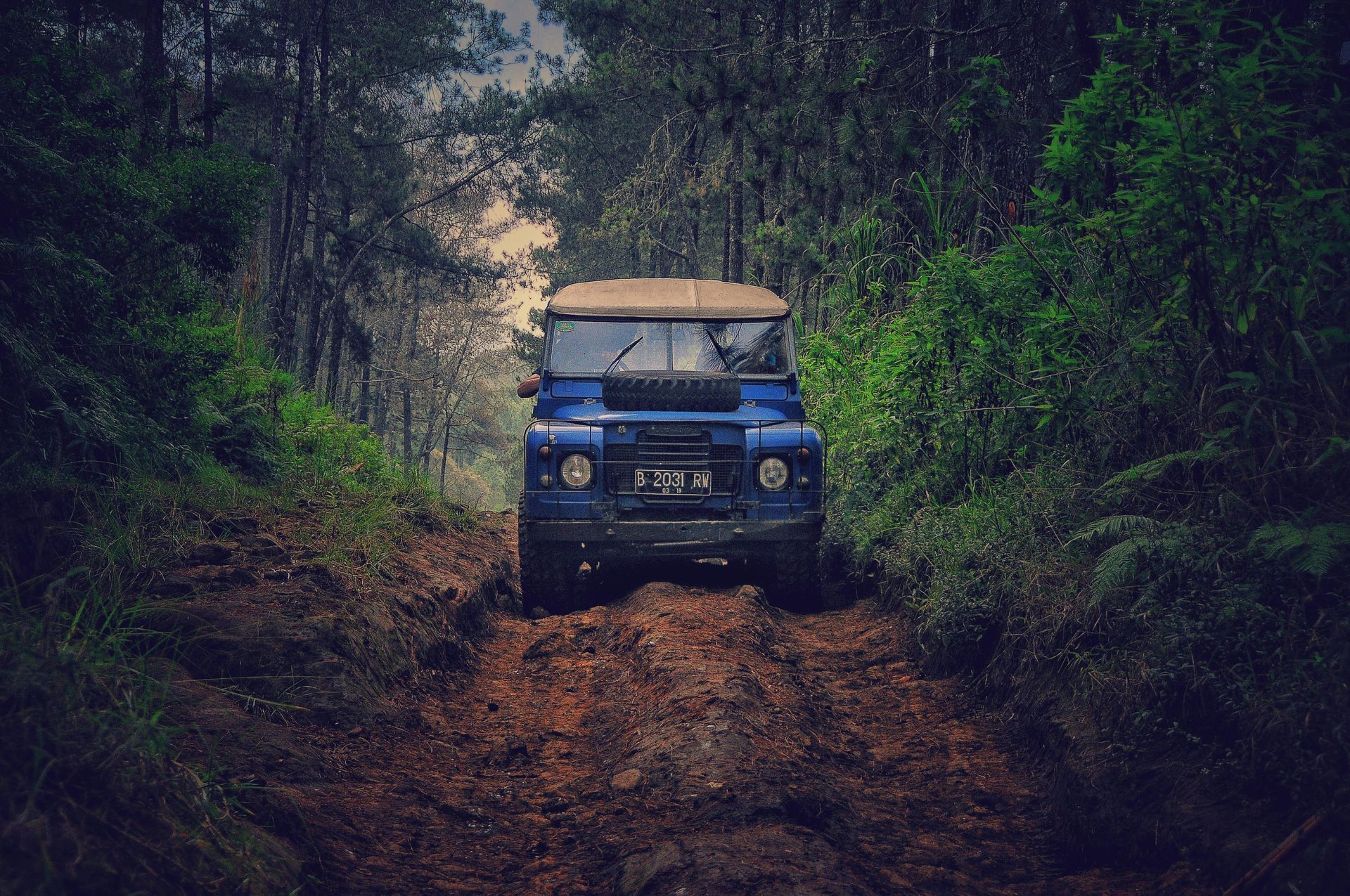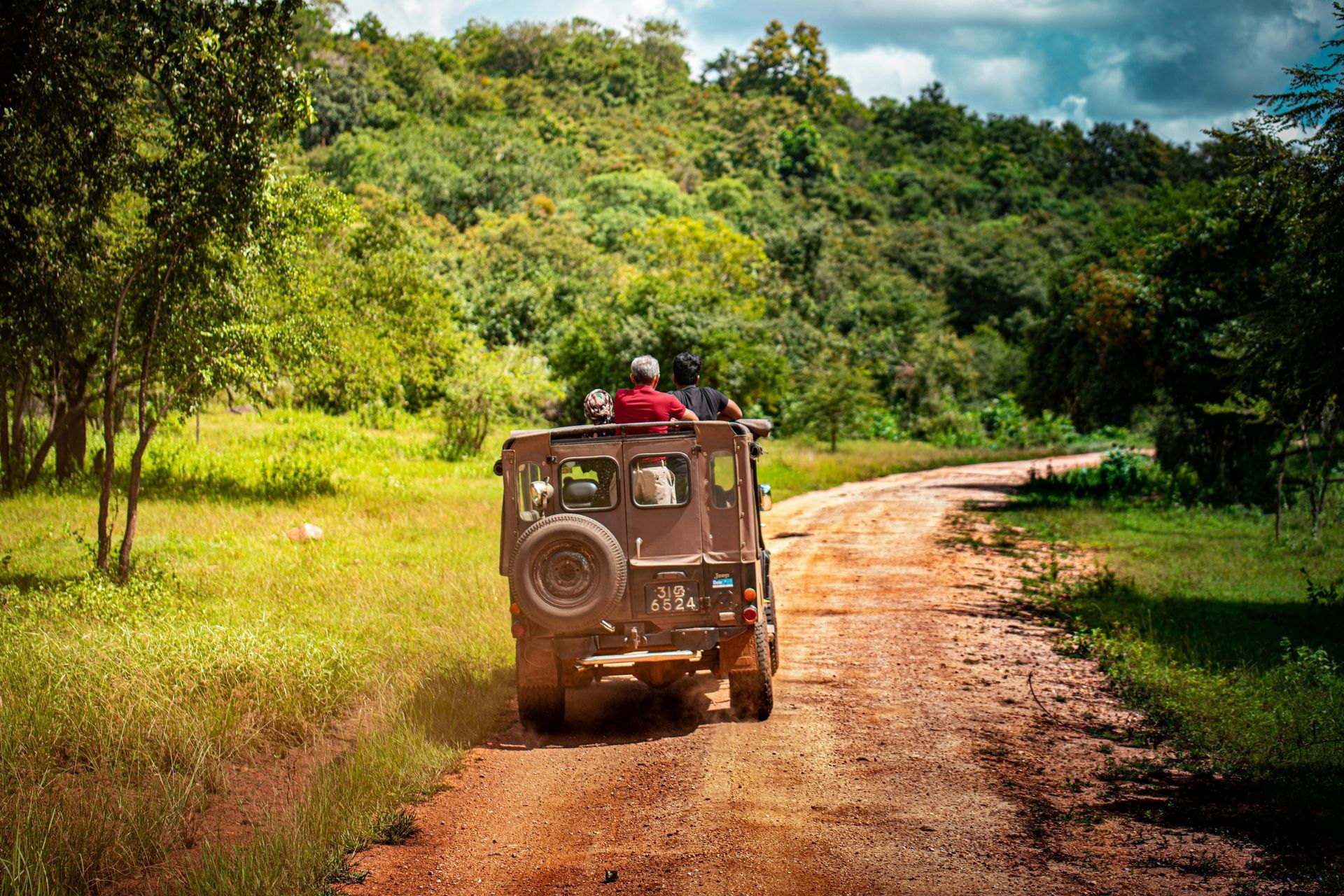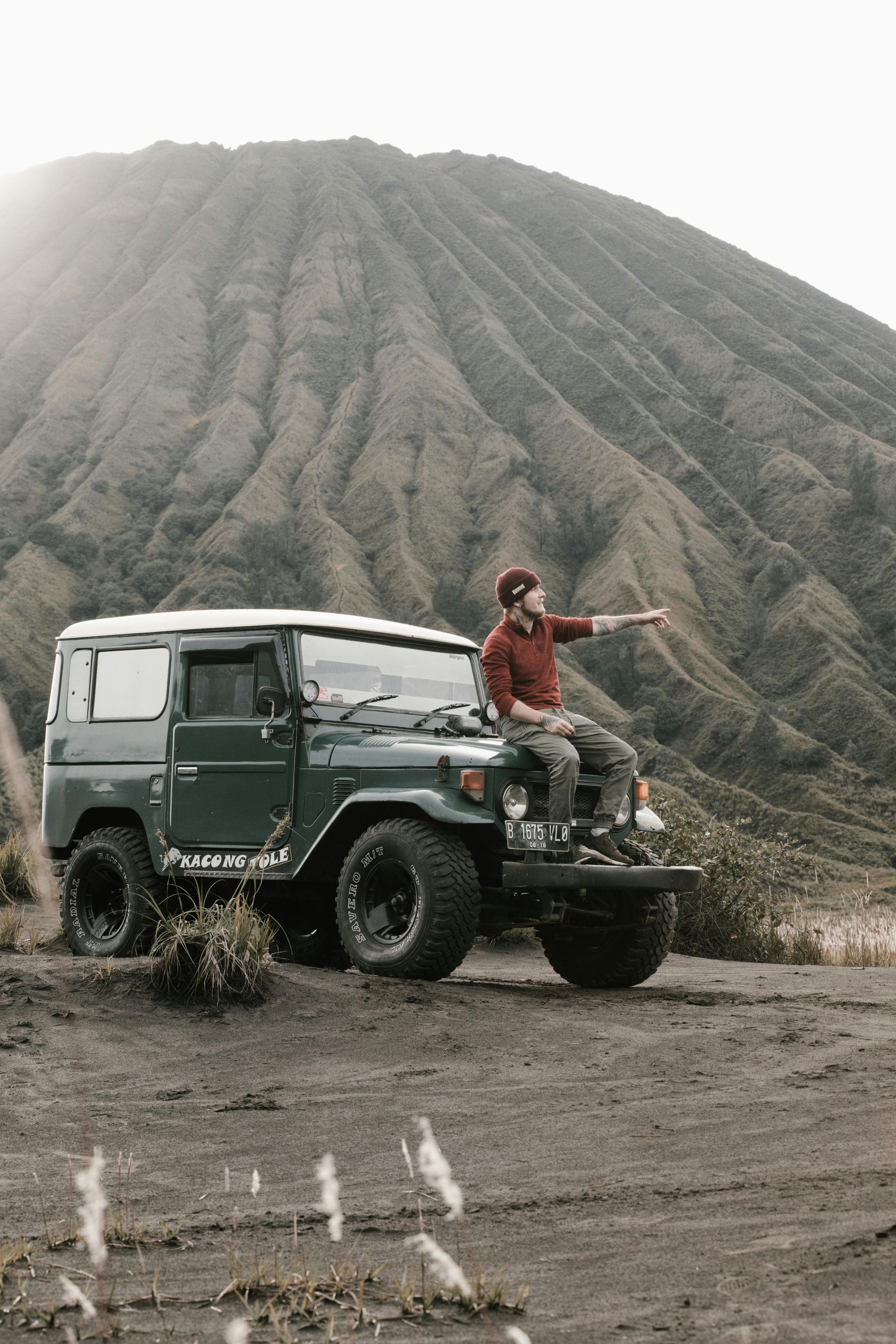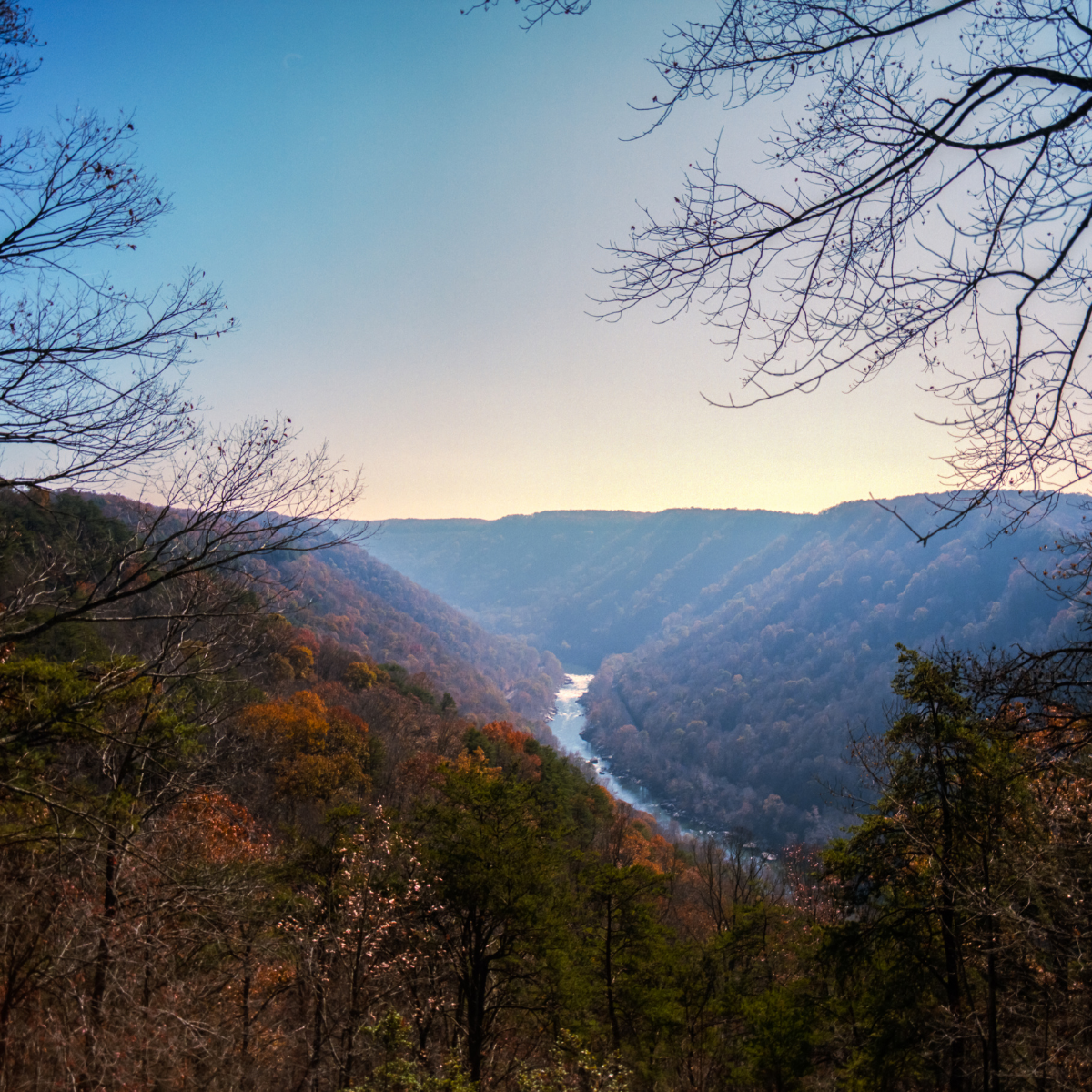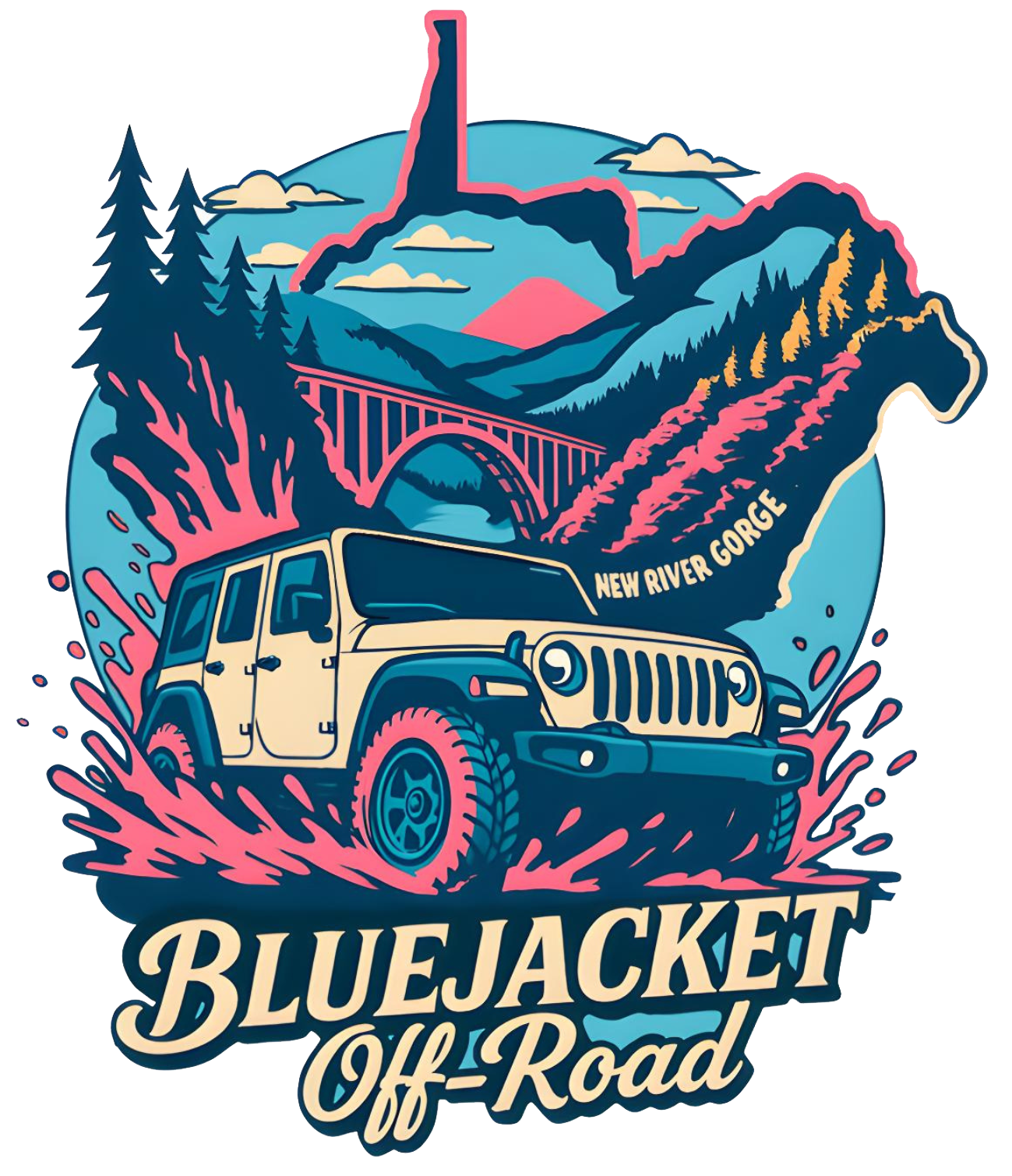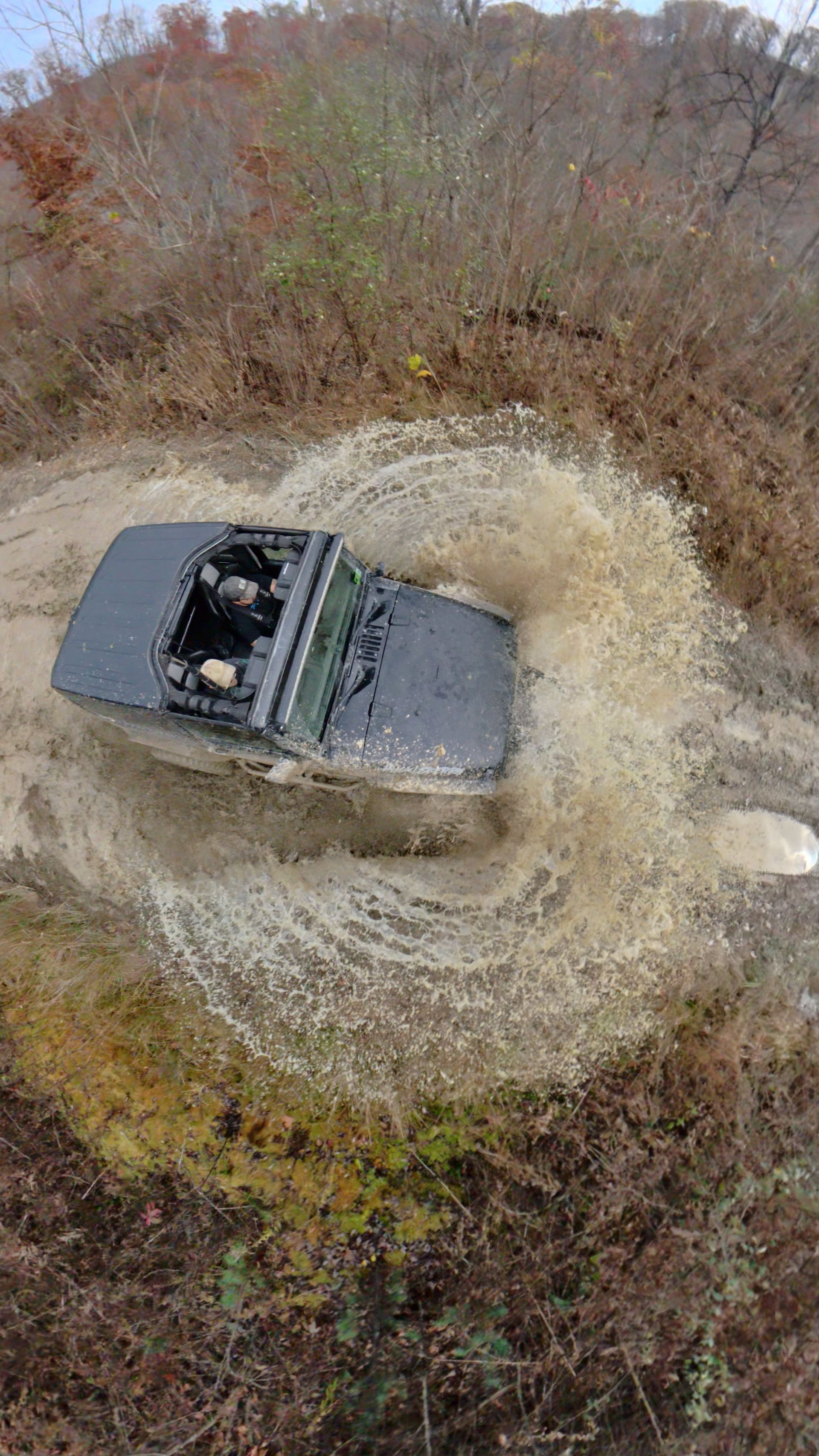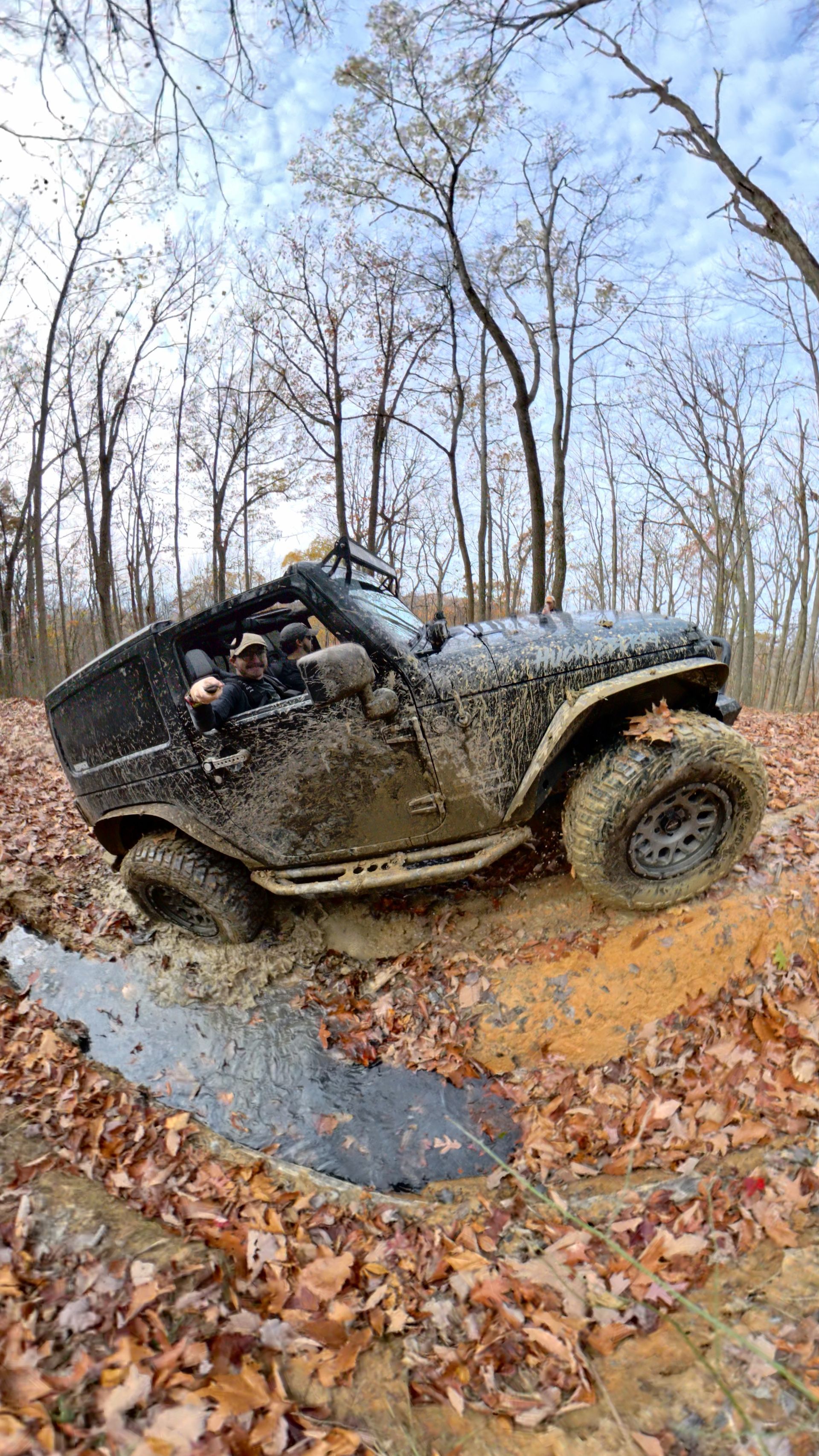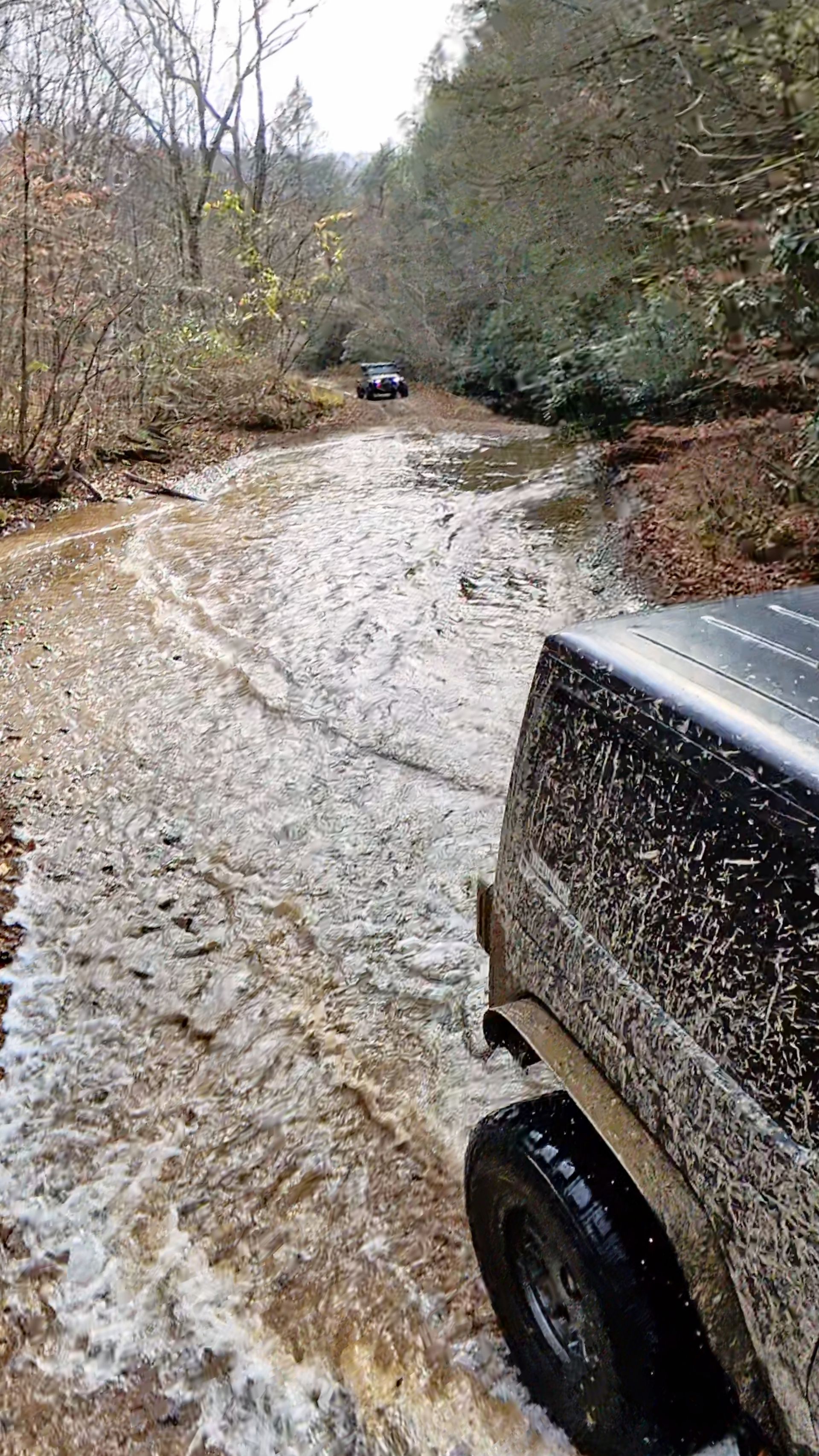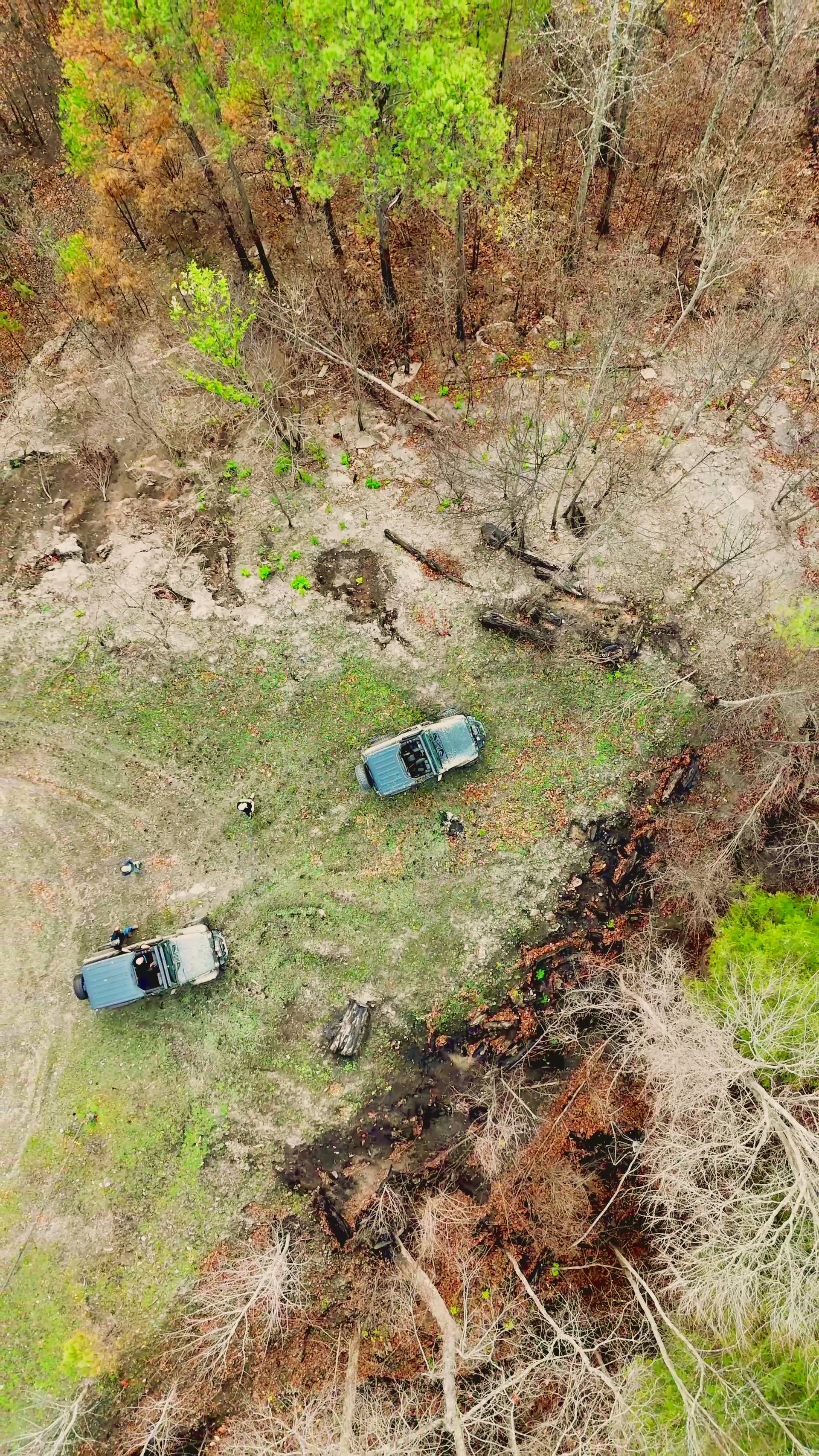Discover Eco-Friendly Mobile Detailing Options for Your Car
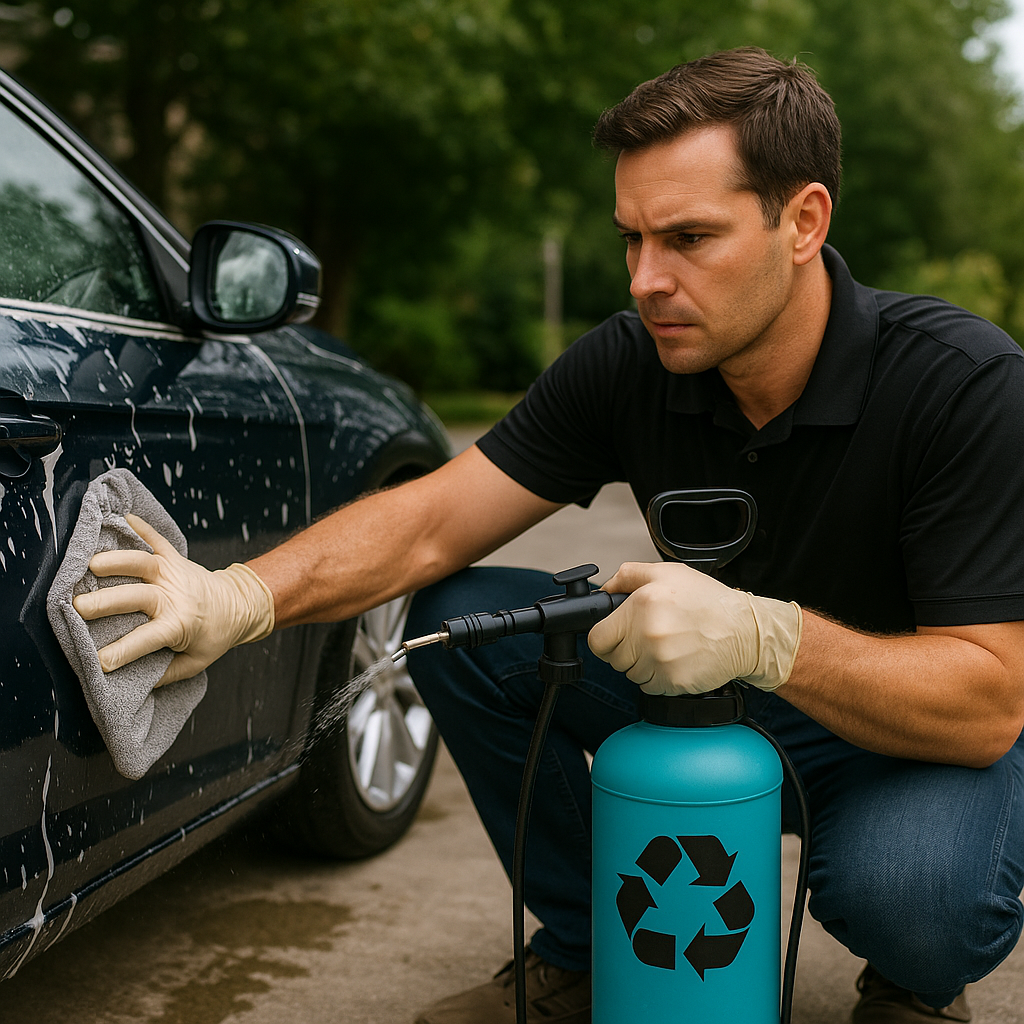
Transform Your Vehicle With Eco-Friendly Mobile Detailing Options
When you're passionate about exploring the great outdoors and conquering challenging trails, your vehicle becomes more than just transportation—it becomes your gateway to adventure. But here's the thing: the same pristine wilderness that calls to your adventurous spirit deserves our protection and respect. That's where eco-friendly mobile detailing comes into play, offering a way to keep your adventure-ready vehicle spotless while minimizing your environmental footprint.
The intersection of vehicle care and environmental consciousness isn't just a trend—it's a responsibility that resonates deeply with outdoor enthusiasts who understand the delicate balance of nature. Whether you're preparing for your next New River Gorge Jeep tour or simply maintaining your daily driver, choosing eco-friendly detailing options ensures that your vehicle care routine aligns with your values as someone who cherishes the natural world.
Discover Eco-Friendly Mobile Detailing Benefits for Your Vehicle
The benefits of eco-friendly mobile detailing extend far beyond simply having a clean conscience about your environmental impact. When you choose green detailing options, you're investing in a comprehensive approach that benefits your vehicle, your health, and the environment simultaneously. Traditional detailing methods often rely on harsh chemicals that can strip away protective coatings, damage sensitive surfaces, and leave residues that attract dirt more quickly. In contrast, eco-friendly alternatives work with your vehicle's materials rather than against them.
One of the most significant advantages of eco-friendly mobile detailing is the gentler approach to your vehicle's surfaces. Biodegradable cleaners and natural products are formulated to be effective without being aggressive, which means they clean thoroughly while preserving the integrity of your paint, interior materials, and protective coatings. This gentler approach translates to longer-lasting results and better preservation of your vehicle's value over time.
The health benefits for you and your family are equally compelling. Traditional detailing products often contain volatile organic compounds (VOCs), ammonia, and other chemicals that can cause respiratory irritation, skin sensitivity, and other health concerns. When these products are used in enclosed spaces like your garage or driveway, the concentration of harmful fumes can be particularly problematic. Eco-friendly alternatives eliminate these concerns, creating a safer environment for everyone involved in the detailing process.
From a practical standpoint, eco-friendly mobile detailing often delivers superior results that last longer than traditional methods. Natural waxes and sealants, for example, tend to provide deeper, more durable protection than their synthetic counterparts. Plant-based cleaners are often more effective at breaking down organic matter like tree sap, bird droppings, and road grime—the exact types of contaminants that off-road vehicles encounter regularly.
The convenience factor cannot be overlooked either. Mobile detailing services that specialize in eco-friendly methods often bring their own water supply and waste management systems, making the entire process more efficient and environmentally responsible. This means you can have your vehicle detailed anywhere—at your home, office, or even at the trailhead—without worrying about water runoff or chemical contamination of local soil and waterways.
Understand Environmental Impacts of Traditional Detailing
To fully appreciate the value of eco-friendly alternatives, it's essential to understand the environmental challenges posed by traditional vehicle detailing methods. The conventional car wash and detailing industry has historically relied on a cocktail of chemicals that, while effective at cleaning, can have far-reaching environmental consequences that extend well beyond the immediate washing area.
Water pollution represents one of the most significant environmental concerns associated with traditional detailing. When vehicles are washed with conventional soaps and chemicals, the runoff carries these substances directly into storm drains, which typically lead to local waterways without any treatment. This contaminated water can contain phosphates, sulfates, heavy metals from brake dust and tire wear, petroleum products, and a variety of synthetic chemicals that can disrupt aquatic ecosystems.
The impact on soil health is equally concerning. Traditional detailing chemicals can alter soil pH, kill beneficial microorganisms, and create conditions that are hostile to plant growth. For outdoor enthusiasts who appreciate the natural beauty of places like the New River Gorge, understanding that traditional vehicle care practices can contribute to the degradation of similar ecosystems elsewhere creates a compelling case for change.
Air quality issues represent another dimension of environmental impact that's often overlooked. Many traditional detailing products release volatile organic compounds into the atmosphere, contributing to ground-level ozone formation and air pollution. These emissions can be particularly problematic in areas with poor air circulation or during temperature inversions, when pollutants become trapped close to the ground.
The manufacturing and disposal of traditional detailing products also carry environmental costs. The production of synthetic chemicals requires significant energy inputs and often generates toxic byproducts. The packaging for these products, typically plastic containers that may not be recyclable, adds to the waste stream. When these products reach the end of their useful life, they often require special disposal procedures to prevent environmental contamination.
Water consumption is another critical factor. Traditional car washes can use anywhere from 40 to 140 gallons of water per vehicle, depending on the method and equipment used. In regions experiencing water scarcity or drought conditions, this level of consumption becomes increasingly problematic. The water used in traditional washing is also typically treated with municipal chemicals like chlorine, which can be harmful to plant life and aquatic organisms when it enters natural water systems.
Explore Waterless Car Wash Techniques for a Greener Clean
Waterless car wash techniques represent one of the most innovative and environmentally conscious approaches to vehicle cleaning available today. These methods have evolved significantly from their early iterations and now offer cleaning power that rivals traditional water-based washing while using a fraction of the resources. For adventure enthusiasts who often find themselves in remote locations where water access is limited, waterless techniques provide an ideal solution for maintaining vehicle cleanliness without environmental compromise.
The science behind waterless car washing relies on specially formulated cleaning solutions that encapsulate dirt and grime, allowing them to be safely lifted away from the vehicle's surface without scratching. These solutions typically contain lubricating agents, cleaning surfactants, and protective polymers that work together to clean, protect, and enhance the vehicle's finish in a single application. The key to success with waterless washing lies in understanding the proper technique and using high-quality microfiber towels that can effectively capture and hold the encapsulated contaminants.
Modern waterless wash products have been engineered to handle even heavily soiled vehicles, though the technique does require some adaptation of traditional washing habits. The process typically involves spraying the waterless solution onto a small section of the vehicle, allowing it to dwell for a few moments to break down the dirt, and then gently wiping with a clean microfiber towel. The towel is frequently folded and rotated to ensure that clean surfaces are always in contact with the vehicle, preventing the redistribution of dirt and potential scratching.
One of the most significant advantages of waterless washing is the elimination of water runoff concerns. Since no water is used in the process, there's no risk of contaminated runoff entering storm drains or natural water systems. This makes waterless washing an ideal choice for environmentally sensitive areas, urban locations with strict water use regulations, or remote camping and trail locations where water conservation is paramount.
The time efficiency of waterless washing is another compelling benefit. Without the need to set up hoses, find water sources, or manage runoff, the entire washing process can be completed more quickly and with greater flexibility regarding location. This efficiency makes it practical to maintain vehicle cleanliness more frequently, which can actually reduce the overall effort required for each cleaning session.
Quality waterless wash products also provide protective benefits that extend beyond simple cleaning. Many formulations include carnauba wax, synthetic polymers, or ceramic components that leave behind a protective layer on the vehicle's surface. This protection helps repel future dirt and contaminants, making subsequent cleaning easier while providing UV protection and enhancing the vehicle's appearance.
For off-road vehicles that encounter mud, sand, and other heavy contamination, waterless washing can be used as part of a multi-step cleaning process. Pre-rinsing with minimal water to remove heavy debris, followed by waterless washing for the detailed cleaning and protection phases, can provide the best of both worlds—thorough cleaning with minimal environmental impact.
Learn About Biodegradable Products Used in Mobile Services
The foundation of eco-friendly mobile detailing lies in the use of biodegradable products that break down naturally in the environment without leaving harmful residues or disrupting ecological systems. Understanding what makes a product truly biodegradable, and how these products perform in real-world detailing applications, is crucial for making informed decisions about your vehicle care routine.
True biodegradability means that a product can be broken down by naturally occurring microorganisms into harmless components like water, carbon dioxide, and biomass within a reasonable timeframe under normal environmental conditions. This process typically occurs within 28 days under standardized testing conditions, though real-world biodegradation may take longer depending on environmental factors like temperature, moisture, and microbial activity.
Plant-based surfactants form the backbone of most biodegradable detailing products. These cleaning agents are derived from renewable sources like coconut oil, corn, and other agricultural products, rather than petroleum-based chemicals. Coconut-derived surfactants, for example, are particularly effective at breaking down oils and greases while being gentle on both vehicle surfaces and the environment. These natural surfactants often outperform their synthetic counterparts in terms of cleaning power while offering superior biodegradability.
Enzyme-based cleaners represent another category of biodegradable products that are particularly effective for specific cleaning challenges. Enzymes are naturally occurring proteins that catalyze chemical reactions, breaking down specific types of organic matter. Protease enzymes excel at breaking down protein-based stains like blood or food spills, while lipase enzymes target fats and oils. Amylase enzymes are effective against starch-based contaminants. The beauty of enzyme cleaners is that they work at the molecular level to break down contaminants completely, rather than simply moving them around or masking them.
Citrus-based cleaners harness the natural degreasing power of d-limonene, a compound found in citrus peels. These products are particularly effective for removing tar, tree sap, and other sticky contaminants that off-road vehicles frequently encounter. The natural solvency of citrus oils makes them excellent alternatives to harsh petroleum-based degreasers, while their pleasant scent and biodegradable nature make them environmentally friendly choices.
Natural acid cleaners derived from sources like vinegar or citric acid provide effective solutions for removing mineral deposits, water spots, and oxidation without the environmental concerns associated with hydrochloric acid or other harsh chemicals. These natural acids are particularly useful for wheel cleaning, where brake dust and road salt can create stubborn deposits that require acidic solutions for effective removal.
The performance of biodegradable products has improved dramatically in recent years, with many formulations now matching or exceeding the effectiveness of traditional chemical cleaners. Advanced manufacturing techniques allow for the concentration and stabilization of natural active ingredients, creating products that deliver professional-grade results while maintaining their environmental credentials.
Quality biodegradable products also tend to be more concentrated than their traditional counterparts, meaning that smaller amounts are needed to achieve the same cleaning results. This concentration reduces packaging waste, transportation costs, and storage requirements while providing better value for the consumer. Many professional mobile detailing services have found that switching to biodegradable products actually reduces their overall product costs while improving their environmental profile.
Assess the Cost Benefits of Eco-Friendly Detailing Options
The financial considerations of eco-friendly mobile detailing extend far beyond the initial service cost, encompassing long-term vehicle maintenance savings, health benefits, and environmental value that traditional cost analyses often overlook. When evaluated comprehensively, eco-friendly detailing options frequently prove to be more economical than conventional alternatives, particularly when the total cost of ownership and broader impacts are considered.
Initial service costs for eco-friendly mobile detailing may appear higher than traditional options, but this difference often reflects the superior quality of products used and the specialized training required to apply eco-friendly techniques effectively. Premium biodegradable products typically cost more to manufacture than mass-produced chemical alternatives, and the waterless or low-water techniques require more skilled application to achieve optimal results. However, these higher upfront costs are often offset by the superior longevity of the results and the reduced frequency of detailing required.
The protective benefits of eco-friendly products contribute significantly to long-term cost savings. Natural waxes and plant-based sealants often provide longer-lasting protection than synthetic alternatives, meaning that your vehicle maintains its appearance and protection for extended periods between detailing sessions. This extended protection translates directly to reduced detailing frequency and lower annual maintenance costs.
Paint preservation represents another significant area of cost savings. Harsh chemical cleaners can gradually damage clear coat and paint surfaces, leading to premature fading, oxidation, and the need for costly paint correction or refinishing. Eco-friendly products work with your vehicle's surfaces rather than against them, helping to preserve the original finish and maintain the vehicle's resale value over time.
Interior preservation benefits are equally important, particularly for vehicles that see regular off-road use. Traditional cleaning chemicals can cause leather to dry and crack, fade fabric colors, and degrade plastic and vinyl surfaces. Eco-friendly alternatives nourish and protect these materials, extending their lifespan and maintaining the vehicle's interior value. For adventure vehicles that serve as both transportation and temporary living spaces during camping trips, this preservation of interior quality is particularly valuable.
Health-related cost savings, while difficult to quantify precisely, can be substantial. Reduced exposure to volatile organic compounds and other harmful chemicals can lead to fewer respiratory issues, skin irritations, and other health problems associated with chemical exposure. For families with children or individuals with chemical sensitivities, the health benefits of eco-friendly detailing can translate to reduced medical costs and improved quality of life.
Water cost savings become particularly significant in areas with high water rates or water restrictions. Waterless and low-water detailing techniques can reduce water consumption by 90% or more compared to traditional washing methods. In regions where water costs are high or where drought conditions impose usage restrictions, these savings can be substantial over time.
The convenience factor of mobile detailing also provides indirect cost benefits. The time saved by having your vehicle detailed at your location, rather than driving to and waiting at a traditional car wash, has real economic value. For busy professionals or families with packed schedules, the ability to have eco-friendly detailing performed while they work or attend to other activities represents significant time savings that can be quantified in terms of hourly wage or opportunity cost.
Equipment and supply costs for those who choose to perform their own eco-friendly detailing are often lower than traditional methods. Waterless wash products eliminate the need for hoses, pressure washers, and water sources, while biodegradable cleaners are often more concentrated, requiring smaller quantities for effective cleaning. High-quality microfiber towels, while more expensive initially, last longer and perform better than traditional cleaning cloths, providing better long-term value.
Review Customer Testimonials on Eco-Friendly Services
Real-world experiences from customers who have embraced eco-friendly mobile detailing provide valuable insights into the practical benefits and performance of these services. The testimonials from outdoor enthusiasts, families, and environmentally conscious vehicle owners paint a compelling picture of how eco-friendly detailing delivers on its promises while often exceeding expectations in unexpected ways.
Adventure enthusiasts consistently report that eco-friendly detailing services better understand the unique challenges faced by off-road vehicles. Traditional car washes often struggle with the heavy mud, sand, and organic debris that accumulate during trail adventures, sometimes requiring multiple wash cycles or harsh chemicals to achieve satisfactory results. Eco-friendly services, by contrast, often specialize in techniques specifically designed for heavily soiled vehicles, using enzyme-based cleaners and specialized methods that effectively remove even stubborn trail contamination without damaging vehicle surfaces.
Many customers note the superior longevity of results achieved with eco-friendly products. One Jeep owner reported that after switching to eco-friendly mobile detailing, the protective coating on his vehicle lasted through an entire season of weekend trail runs, whereas traditional wax applications typically required renewal every few weeks. This extended protection not only saved money but also meant less frequent interruption of adventure schedules for vehicle maintenance.
Families with children frequently emphasize the peace of mind that comes with eco-friendly detailing. Parents report feeling comfortable allowing their children to play around the vehicle during and after the detailing process, without concerns about chemical exposure or residues. Several testimonials mention that children with asthma or chemical sensitivities experienced no adverse reactions to eco-friendly detailing products, whereas traditional car wash chemicals had previously caused respiratory irritation.
Professional drivers and fleet operators provide particularly valuable insights into the performance and cost-effectiveness of eco-friendly detailing. A delivery company owner reported that switching to eco-friendly mobile detailing for his fleet not only reduced his environmental impact but also resulted in lower overall maintenance costs due to better preservation of vehicle interiors and exteriors. The company also found that employees preferred the eco-friendly approach, as it eliminated concerns about chemical exposure during the workday.
Pet owners consistently praise eco-friendly detailing services for their understanding of pet-related cleaning challenges. Traditional detailing often involves chemicals that can be harmful to pets or leave residues that cause skin irritation. Eco-friendly services use pet-safe products and techniques that effectively remove pet hair, odors, and stains without creating health risks for furry family members. Many testimonials mention that pets seem more comfortable in vehicles after eco-friendly detailing, suggesting that the absence of chemical residues creates a more pleasant environment for sensitive animal companions.
Customers in water-restricted areas frequently express appreciation for waterless and low-water detailing techniques. During drought conditions or in areas with strict water use regulations, traditional car washing may be prohibited or heavily restricted. Eco-friendly mobile detailing services provide a way to maintain vehicle cleanliness and appearance without violating water use restrictions or contributing to water waste. Several customers in California and other drought-prone regions report that eco-friendly detailing allowed them to maintain their vehicles properly during extended periods when traditional washing was not permitted.
The convenience and flexibility of eco-friendly mobile detailing receive consistent praise in customer testimonials. Many customers appreciate that these services can be performed in environmentally sensitive areas, such as near lakes, streams, or in residential areas with strict runoff regulations. The ability to have vehicles detailed at camping sites, trailheads, or other remote locations without environmental concerns adds significant value for outdoor enthusiasts who want to maintain their vehicles during extended adventures.
Quality and attention to detail are frequently mentioned themes in customer reviews. Many eco-friendly detailing services employ technicians who are passionate about environmental protection and take pride in delivering superior results using sustainable methods. This passion often translates to more thorough work and better customer service, as technicians view each job as an opportunity to demonstrate that eco-friendly methods can deliver exceptional results.
Analyze Long-Term Effects on Vehicle Maintenance With Green Options
The long-term impact of eco-friendly detailing on vehicle maintenance extends far beyond immediate appearance improvements, influencing everything from mechanical longevity to resale value. Understanding these extended benefits helps vehicle owners make informed decisions about their maintenance routines while recognizing the true value proposition of sustainable detailing practices.
Paint and clear coat preservation represents one of the most significant long-term benefits of eco-friendly detailing. Traditional harsh chemicals can gradually break down the molecular structure of clear coat, leading to micro-scratches, oxidation, and premature aging of the vehicle's finish. Eco-friendly products work synergistically with automotive finishes, often containing natural UV protectants and nourishing oils that help maintain the flexibility and integrity of clear coat over time. Vehicles maintained with eco-friendly products typically retain their original luster and color depth significantly longer than those subjected to harsh chemical treatments.
The cumulative effect of gentle cleaning extends to all exterior surfaces, including plastic trim, rubber seals, and metal components. Traditional cleaners can cause rubber seals to become brittle and crack, leading to water leaks and wind noise. Plastic trim often fades or becomes chalky when exposed to harsh chemicals repeatedly. Eco-friendly alternatives contain conditioning agents that help maintain the flexibility and appearance of these components, reducing the need for costly replacements and repairs over the vehicle's lifetime.
Interior preservation benefits are equally impressive when viewed over extended periods. Leather surfaces treated with natural, pH-balanced cleaners and conditioners maintain their suppleness and resist cracking far better than those exposed to alcohol-based or petroleum-derived products. Fabric upholstery retains its color and texture when cleaned with enzyme-based products that break down stains at the molecular level rather than using bleaching agents that can weaken fibers over time.
The impact on mechanical components, while less obvious, can be substantial. Traditional car wash soaps and degreasers can be overly aggressive when they come into contact with engine components, rubber hoses, and electrical connections. Eco-friendly products are formulated to be effective on dirt and grime while being gentle on mechanical components, reducing the risk of premature deterioration of under-hood components that may be exposed during washing.
Corrosion protection represents another critical long-term benefit. Many eco-friendly detailing products contain natural corrosion inhibitors that help protect metal surfaces from rust and oxidation. This protection is particularly valuable for vehicles used in harsh environments, such as those exposed to road salt, ocean air, or the mineral-rich dust common in many off-road environments. The natural protective barriers created by eco-friendly products often provide superior long-term corrosion resistance compared to synthetic alternatives.
The frequency of required maintenance often decreases with consistent use of eco-friendly products. The superior protective qualities of natural waxes and sealants mean that vehicles require less frequent detailing to maintain their appearance and protection. This reduced maintenance frequency not only saves money but also reduces the cumulative exposure of the vehicle to cleaning products, further enhancing long-term preservation.
Resale value preservation is a tangible long-term benefit that can be quantified when it comes time to sell or trade the vehicle. Vehicles that have been consistently maintained with high-quality eco-friendly products typically show better preservation of both interior and exterior surfaces. The absence of chemical damage, combined with superior protection from environmental contaminants, often results in higher resale values and faster sales when the time comes to upgrade.
Environmental systems within the vehicle also benefit from eco-friendly maintenance practices. Air conditioning systems, cabin air filters, and ventilation components are not exposed to harsh chemical residues that can cause premature degradation or create unpleasant odors. This preservation of environmental systems contributes to better air quality inside the vehicle and reduces the need for costly system cleaning or component replacement.
The psychological benefits of long-term eco-friendly maintenance should not be overlooked. Vehicle owners who choose sustainable detailing options often report greater satisfaction with their vehicles and increased pride in ownership. This emotional connection can lead to better overall care and maintenance, creating a positive feedback loop that further enhances the vehicle's longevity and performance.
Identify Key Eco-Friendly Products for Mobile Detailing
The landscape of eco-friendly detailing products has expanded dramatically in recent years, offering professional-grade alternatives to virtually every traditional chemical used in vehicle care. Understanding the key categories and standout products in each area helps both consumers and professional detailers make informed choices that deliver exceptional results while maintaining environmental responsibility.
Waterless wash concentrates represent the cornerstone of eco-friendly mobile detailing, with several formulations setting the standard for performance and environmental safety. Premium waterless wash products typically combine plant-based surfactants with natural lubricants and protective polymers to create solutions that can safely clean even heavily soiled vehicles without water. The best formulations include carnauba wax or synthetic polymer protection, leaving behind a protective layer that enhances gloss and repels future contamination.
All-purpose cleaners derived from natural sources provide versatile cleaning power for both interior and exterior applications. Citrus-based cleaners excel at removing adhesive residues, tree sap, and organic stains, while maintaining pleasant natural fragrances and complete biodegradability. Enzyme-based all-purpose cleaners offer superior performance on protein and organic stains, making them ideal for interior cleaning and spot treatment of heavily soiled areas.
Natural glass cleaners have evolved to match or exceed the performance of ammonia-based alternatives while eliminating the health and environmental concerns associated with traditional formulations. The best eco-friendly glass cleaners use plant-based alcohols and natural acids to achieve streak-free results without leaving chemical residues that can cause respiratory irritation or environmental contamination.
Wheel and tire care products represent an area where eco-friendly alternatives have made particularly impressive advances. Natural acid-based wheel cleaners derived from citric acid or other organic acids effectively remove brake dust and road grime without the environmental hazards of hydrochloric acid-based products. Tire dressings made from natural oils and waxes provide long-lasting protection and enhancement without the petroleum-based silicones that can attract dirt and create slippery surfaces.
Interior cleaning products have seen remarkable innovation in the eco-friendly space, with leather cleaners and conditioners made from natural oils and plant-based surfactants often outperforming traditional petroleum-based products. These natural formulations nourish leather while cleaning, helping to maintain flexibility and prevent cracking. Fabric cleaners using enzyme technology can break down stains at the molecular level, often achieving better results than traditional chemical cleaners while being completely safe for children and pets.
Wax and sealant products represent perhaps the most impressive category of eco-friendly detailing products, with natural carnauba wax formulations and plant-based synthetic alternatives providing protection and enhancement that rivals or exceeds traditional products. Premium natural waxes often include additional protective ingredients like natural UV absorbers and antioxidants that help preserve vehicle finishes over extended periods.
Microfiber care products designed for eco-friendly detailing ensure that the tools used in the process maintain their effectiveness while supporting environmental goals. Specialized microfiber wash solutions remove embedded contaminants without damaging the delicate fibers, extending the life of these essential tools while maintaining their cleaning effectiveness.
Concentrated formulations represent a key trend in eco-friendly products, with many manufacturers offering super-concentrated solutions that reduce packaging waste and transportation costs while providing better value for consumers. These concentrates often deliver superior performance per unit cost compared to ready-to-use traditional products, making the switch to eco-friendly options more economically attractive.
Quality control and certification programs help identify truly eco-friendly products in a marketplace where "green" claims are not always substantiated. Products certified by organizations like Green Seal, EcoLogo, or the EPA's Safer Choice program have undergone rigorous testing to verify their environmental and safety claims. These certifications provide confidence that products will perform as advertised while meeting strict environmental standards.
Research Natural Wax and Sealant Alternatives for Shine
The evolution of natural wax and sealant technology has revolutionized the protective coating industry, offering eco-conscious vehicle owners options that not only match but often exceed the performance of traditional synthetic products. Understanding the science behind these natural alternatives and their practical applications helps vehicle owners make informed decisions about long-term paint protection while maintaining their environmental values.
Carnauba wax, derived from the leaves of the Brazilian carnauba palm, remains the gold standard for natural vehicle protection. This remarkable natural substance provides an unmatched depth of gloss and warmth that synthetic alternatives struggle to replicate. The molecular structure of carnauba wax creates a protective barrier that is both hydrophobic and resistant to environmental contaminants, while its natural UV-filtering properties help prevent paint oxidation and fading. Premium carnauba formulations often blend different grades of wax to optimize both protection and appearance, with the highest grades providing the deepest, most lustrous finish.
Plant-based synthetic alternatives have emerged as compelling options for those seeking the durability of synthetic protection with environmental benefits. These products use renewable plant sources as the foundation for polymer chains that provide long-lasting protection. Soy-based polymers, for example, can be engineered to provide months of protection while maintaining complete biodegradability. These plant-based synthetics often outperform traditional carnauba in terms of longevity while providing similar aesthetic benefits.
Beeswax formulations represent another natural alternative that offers unique benefits for vehicle protection. Beeswax provides excellent water repellency and creates a protective barrier that is particularly effective against organic contaminants like tree sap and bird droppings. When properly formulated with other natural ingredients, beeswax can provide protection that lasts for several months while maintaining the natural appearance that many enthusiasts prefer.
Ceramic coating alternatives derived from natural sources are beginning to emerge in the eco-friendly market. These products use naturally occurring minerals and plant-based carriers to create protective coatings that provide some of the benefits of traditional ceramic coatings without the environmental concerns associated with synthetic ceramic products. While not yet matching the extreme durability of synthetic ceramics, these natural alternatives offer impressive protection and longevity for environmentally conscious consumers.
The application techniques for natural wax and sealant products often differ from synthetic alternatives, requiring understanding and adaptation to achieve optimal results. Natural waxes typically require more careful temperature and humidity considerations, as they can be more sensitive to environmental conditions during application. However, this sensitivity often translates to better bonding with the vehicle's surface when conditions are optimal, resulting in superior protection and appearance.
Layering techniques with natural products can provide enhanced protection and appearance benefits. Many professional detailers use multiple thin coats of natural wax rather than single thick applications, allowing each layer to cure properly and bond with the previous layer. This technique can provide protection that rivals synthetic alternatives while maintaining the natural aesthetic that makes carnauba and other natural waxes so desirable.
Maintenance requirements for natural wax and sealant products are often less demanding than synthetic alternatives. Natural waxes tend to wear away gradually and evenly, rather than failing suddenly like some synthetic products. This gradual wear pattern makes it easier to maintain consistent protection through regular reapplication, and the natural products often bond well with previous layers, making touch-up applications more effective.
The seasonal considerations for natural wax and sealant products can actually provide advantages for vehicle owners in varying climates. Different natural wax formulations can be optimized for specific weather conditions, with harder waxes providing better durability in hot climates and softer formulations offering easier application and better performance in cooler conditions. This seasonal approach allows for year-round optimization of protection and appearance.
Quality assessment of natural wax and sealant products requires understanding the source materials and processing methods used in their manufacture. The grade and purity of carnauba wax, for example, significantly impacts both performance and price. Higher grades of carnauba provide better protection and appearance but require more careful application techniques. Understanding these quality differences helps consumers make informed decisions about which products best meet their needs and budget.
Investigate Non-Toxic Interior Cleaners Safe for All
The interior environment of vehicles presents unique challenges for eco-friendly cleaning, as occupants are in direct contact with treated surfaces and may be exposed to any residues or fumes from cleaning products. Non-toxic interior cleaners have evolved to address these concerns while providing superior cleaning performance for the diverse materials found in modern vehicle interiors.
Enzyme-based interior cleaners represent one of the most effective categories of non-toxic cleaning products available today. These cleaners use naturally occurring enzymes to break down specific types of organic matter at the molecular level, providing thorough cleaning without leaving harmful residues. Protease enzymes excel at breaking down protein-based stains like blood, sweat, and food spills, while lipase enzymes target fats and oils. Amylase enzymes effectively handle starch-based contaminants, making enzyme cleaners particularly effective for families with children who may spill food and drinks in vehicles.
Plant-based surfactant cleaners offer gentle yet effective cleaning for a wide range of interior surfaces. These cleaners derive their cleaning power from renewable plant sources like coconut oil, corn, and other agricultural products. The natural surfactants are effective at lifting dirt and stains while being completely safe for human contact and exposure. Many plant-based cleaners also include natural conditioning agents that help preserve and protect interior materials while cleaning.
Vinegar-based cleaning solutions provide natural acidic cleaning power that is particularly effective for removing mineral deposits, water spots, and alkaline stains. When properly formulated and diluted, vinegar-based cleaners can safely clean glass, plastic, and many fabric surfaces without leaving harmful residues. The natural antimicrobial properties of vinegar also help eliminate odor-causing bacteria and fungi, making these cleaners particularly valuable for vehicles that have experienced moisture intrusion or organic contamination.
Essential oil-enhanced cleaners combine effective cleaning with natural antimicrobial properties and pleasant fragrances. Tea tree oil, for example, provides natural antifungal and antibacterial properties that help eliminate odors and prevent the growth of harmful microorganisms. Citrus oils like orange and lemon provide natural degreasing power while leaving fresh, natural scents. These essential oil cleaners are particularly popular with families who want to avoid synthetic fragrances and antimicrobial chemicals.
Oxygen-based cleaners use the natural cleaning power of oxygen to break down organic stains and contaminants without harsh chemicals. These cleaners are particularly effective on fabric upholstery and carpeting, where they can penetrate deep into fibers to remove embedded dirt and stains. The oxygen-based cleaning action is gentle enough for delicate materials while being powerful enough to handle even stubborn stains.
Leather-specific non-toxic cleaners address the unique needs of leather upholstery, which requires pH-balanced cleaning to avoid damage. Natural leather cleaners often use plant-based oils and gentle surfactants to clean while conditioning the leather. These products help maintain the natural flexibility and appearance of leather while removing dirt, oils, and stains. Many natural leather cleaners also include UV protection to help prevent fading and cracking from sun exposure.
Fabric and upholstery cleaners designed for non-toxic applications often use encapsulation technology to surround and isolate dirt particles, allowing them to be easily removed without harsh chemicals. These cleaners are particularly effective for spot cleaning and can often remove stains that traditional cleaners cannot handle. The encapsulation process also helps prevent re-soiling by creating a protective barrier around cleaned fibers.
Glass and plastic cleaners formulated without ammonia or other harsh chemicals provide streak-free cleaning while maintaining safety for vehicle occupants. These cleaners often use plant-based alcohols and natural acids to achieve professional results without the health concerns associated with traditional glass cleaners. The absence of harsh chemicals also means these cleaners are safe to use on tinted windows and delicate electronic displays.
Odor elimination products that work through natural processes rather than masking scents provide long-lasting freshness without synthetic fragrances or chemicals. Activated charcoal, baking soda, and enzyme-based odor eliminators work by actually neutralizing odor-causing compounds rather than simply covering them up. These natural odor control methods are particularly valuable for vehicles used for outdoor activities, where organic odors from gear, pets, or outdoor equipment can become embedded in interior surfaces.
Compare Eco-Friendly Tire Cleaners and Dressings Available
Tire care represents one of the most challenging areas for eco-friendly product development, as tires accumulate some of the most stubborn contaminants while requiring products that can withstand extreme conditions. The evolution of eco-friendly tire cleaners and dressings has produced options that not only match traditional products in performance but often exceed them in safety and environmental responsibility.
Natural citrus-based tire cleaners harness the powerful degreasing properties of d-limonene and other citrus-derived compounds to remove road grime, brake dust, and organic contaminants from tire surfaces. These cleaners are particularly effective at removing the petroleum-based contaminants that accumulate on tires during normal driving, while their natural origin ensures complete biodegradability. The pleasant citrus scent is an added benefit, eliminating the harsh chemical odors associated with traditional tire cleaners.
Enzyme-enhanced tire cleaning products use specialized enzymes to break down organic matter that becomes embedded in tire rubber. These products are particularly effective for off-road vehicles that encounter mud, vegetation, and other organic debris. The enzyme action works at the molecular level to break down these contaminants completely, rather than simply removing surface dirt. This thorough cleaning helps maintain tire appearance and can even improve traction by removing substances that can make tire surfaces slippery.
Water-based tire dressings represent a significant advancement in eco-friendly tire care, providing long-lasting protection and enhancement without the environmental concerns of silicone-based products. These dressings use natural polymers and plant-based ingredients to create protective coatings that enhance tire appearance while providing UV protection and resistance to environmental contaminants. Unlike silicone-based dressings, water-based alternatives do not attract dirt or create slippery surfaces that can be hazardous.
Natural oil-based tire conditioners focus on nourishing and protecting tire rubber rather than simply providing cosmetic enhancement. These products use plant-based oils and natural conditioning agents to help maintain tire flexibility and prevent cracking and aging. Regular use of natural tire conditioners can extend tire life by preventing the rubber degradation that occurs when tires are exposed to UV radiation, ozone, and other environmental factors without protection.
Carnauba-enhanced tire dressings combine the protective benefits of natural wax with tire-specific formulations to provide long-lasting protection and enhancement. These products create a protective barrier that helps repel water, dirt, and other contaminants while providing a natural, non-greasy appearance. The carnauba content also provides UV protection that helps prevent tire sidewall fading and cracking.
Ceramic-infused eco-friendly tire coatings represent the cutting edge of sustainable tire protection technology. These products use naturally derived ceramic particles suspended in plant-based carriers to create extremely durable protective coatings. While more expensive than traditional tire dressings, these ceramic-enhanced products can provide protection that lasts for months, reducing the frequency of application and providing superior long-term value.
Application techniques for eco-friendly tire products often differ from traditional methods, requiring understanding of the unique properties of natural ingredients. Many eco-friendly tire cleaners work best when allowed to dwell on the surface for several minutes before agitation, allowing the natural cleaning agents time to break down contaminants. Similarly, natural tire dressings often require thin, even application and adequate curing time to achieve optimal results.
Performance comparison testing has shown that many eco-friendly tire products actually outperform traditional alternatives in key areas. Natural cleaners often provide more thorough cleaning with less scrubbing required, while eco-friendly dressings typically last longer and provide better protection against environmental damage. The absence of harsh chemicals also means that eco-friendly products are less likely to cause damage to wheel finishes or other nearby surfaces.
Safety considerations make eco-friendly tire products particularly attractive for families and professional detailers. Traditional tire cleaners often contain acids or caustic chemicals that can cause skin and respiratory irritation, while conventional tire dressings may contain silicones that create slippery surfaces. Eco-friendly alternatives eliminate these safety concerns while providing superior performance and environmental responsibility.
Cost analysis of eco-friendly tire care products often reveals better long-term value despite higher initial costs. The superior cleaning effectiveness of natural products often means that less product is required for each application, while the longer-lasting protection provided by eco-friendly dressings reduces the frequency of reapplication. When the total cost of ownership is considered, including the value of improved safety and environmental protection, eco-friendly tire care products often provide better overall value.
Examine Upholstery Cleaning Solutions Free From Harsh Chemicals
Vehicle upholstery presents unique cleaning challenges that require specialized solutions capable of removing diverse stains and contaminants while being safe for human contact and exposure. The development of harsh chemical-free upholstery cleaners has produced remarkably effective products that often outperform traditional cleaners while eliminating health and environmental concerns.
Enzyme-based upholstery cleaners represent the most advanced category of natural cleaning solutions available today. These products use specific enzymes to target different types of organic stains and contaminants. Protease enzymes break down protein-based stains like blood, sweat, and food spills, while lipase enzymes target fats and oils from food, cosmetics, and body oils. Amylase enzymes effectively handle starch-based stains from spilled food and drinks. The enzyme action works at the molecular level to completely break down stains rather than simply moving them around or masking them.
Oxygen-based cleaning systems provide powerful stain removal without harsh chemicals by using the natural cleaning power of oxygen to break down organic contaminants. These cleaners are particularly effective on fabric upholstery, where they can penetrate deep into fibers to remove embedded dirt and stains. The oxygen-based cleaning action is color-safe and gentle enough for delicate fabrics while being powerful enough to handle even set-in stains that have been present for extended periods.
Plant-based surfactant cleaners offer gentle yet effective cleaning for all types of upholstery materials. These cleaners derive their cleaning power from renewable plant sources and are formulated to be effective on both water-based and oil-based stains. The natural surfactants lift dirt and stains from fabric fibers while being completely safe for human contact. Many plant-based cleaners also include natural conditioning agents that help preserve fabric appearance and texture.
Encapsulation cleaning technology represents an innovative approach to upholstery cleaning that eliminates the need for harsh chemicals or excessive moisture. These cleaners surround dirt and stain particles with natural polymers, crystallizing them for easy removal through vacuuming. This process is particularly effective for routine maintenance cleaning and can often remove stains that traditional wet cleaning methods cannot handle. The low-moisture approach also reduces drying time and prevents the mold and mildew issues that can occur with over-wetting.
Natural acid-based cleaners use organic acids like citric acid or acetic acid to remove alkaline stains and mineral deposits from upholstery. These cleaners are particularly effective for removing water spots, soap residues, and other alkaline contaminants that can accumulate on upholstery over time. The natural acids are much gentler than synthetic alternatives while providing effective cleaning power for specific types of stains.
Steam cleaning with pure water represents the ultimate in chemical-free upholstery cleaning for appropriate applications. High-temperature steam can effectively sanitize and clean many types of upholstery without any cleaning chemicals whatsoever. This method is particularly effective for routine maintenance cleaning and for situations where chemical sensitivity is a concern. The high temperature of the steam kills bacteria, dust mites, and other allergens while loosening dirt and debris for easy removal.
Leather-specific natural cleaners address the unique needs of leather upholstery, which requires pH-balanced cleaning to avoid damage. Natural leather cleaners often use plant-based oils and gentle surfactants to clean while conditioning the leather. These products help maintain the natural flexibility and appearance of leather while removing dirt, oils, and stains. The conditioning action helps prevent cracking and aging while maintaining the leather's natural beauty.
Spot treatment solutions for specific types of stains allow for targeted cleaning without treating entire upholstery surfaces. Natural spot cleaners are formulated for specific stain types, such as protein stains, oil-based stains, or tannin stains from beverages. This targeted approach allows for more effective stain removal while minimizing the amount of cleaning product used and reducing the potential for damage to surrounding areas.
Fabric protection treatments using natural ingredients help prevent future staining while maintaining the breathability and appearance of upholstery fabrics. These treatments create invisible barriers that repel liquids and stains while allowing air circulation through the fabric. Natural fabric protectors often use plant-based polymers or natural waxes to create these protective barriers without the environmental and health concerns associated with synthetic fabric protection chemicals.
Pre-treatment solutions for heavily soiled upholstery use natural ingredients to break down embedded dirt and prepare surfaces for cleaning. These products often combine enzymes with natural surfactants to begin the cleaning process before the main cleaning step. Pre-treatment is particularly valuable for vehicles that see heavy use or have been exposed to significant contamination from outdoor activities.
Evaluate the Impact of Eco-Friendly Paint Protection Products
Paint protection represents one of the most critical aspects of vehicle maintenance, as the paint system serves as both the aesthetic foundation and the primary barrier against environmental damage. Eco-friendly paint protection products have evolved to provide comprehensive protection that often exceeds traditional alternatives while eliminating the environmental and health concerns associated with conventional protective coatings.
Natural wax-based protection systems provide the foundation for eco-friendly paint care, with carnauba wax leading the category in terms of both performance and environmental responsibility. The molecular structure of carnauba wax creates a protective barrier that is naturally hydrophobic, UV-resistant, and chemically inert. This natural protection helps prevent water spotting, oxidation, and contamination bonding while providing the deep, warm gloss that synthetic alternatives struggle to replicate. The renewable nature of carnauba wax ensures that its production and use have minimal environmental impact.
Plant-based polymer protection represents the next generation of eco-friendly paint protection, combining the renewable benefits of plant-derived materials with the durability advantages of synthetic polymers. These products use agricultural sources like soybeans, corn, and other crops as the foundation for protective polymer chains that can provide months of protection. The plant-based polymers often bond more effectively with automotive paint than petroleum-based alternatives, providing superior protection against environmental contaminants.
Bio-based ceramic coating alternatives are beginning to emerge as viable options for long-term paint protection. These products use naturally occurring minerals and plant-based carriers to create protective coatings that provide some of the benefits of traditional ceramic coatings without the environmental concerns. While not yet matching the extreme durability of synthetic ceramics, these natural alternatives offer impressive protection and longevity for environmentally conscious consumers.
UV protection capabilities of eco-friendly products often exceed those of traditional alternatives due to the natural UV-filtering properties of many plant-based ingredients. Carnauba wax, for example, contains natural compounds that absorb and reflect harmful UV radiation, helping to prevent paint oxidation and fading. Many eco-friendly protection products also include additional natural UV absorbers like zinc oxide or titanium dioxide, providing comprehensive protection against sun damage.
Chemical resistance properties of natural protection products are often superior to synthetic alternatives, particularly against organic contaminants like tree sap, bird droppings, and insect residues. The natural composition of eco-friendly protectants creates barriers that are less likely to be compromised by organic acids and other naturally occurring contaminants. This resistance helps maintain protection effectiveness over longer periods and reduces the frequency of reapplication required.
Hydrophobic performance of eco-friendly paint protection products has improved dramatically with advances in natural wax and polymer technology. Modern carnauba formulations can achieve water contact angles that rival synthetic alternatives, providing excellent water beading and sheeting properties. This hydrophobic performance not only enhances appearance but also provides practical benefits by helping to prevent water spotting and making routine washing more effective.
Durability testing of eco-friendly paint protection products has shown impressive results, with many natural products providing protection that lasts as long as or longer than traditional alternatives. The key to durability often lies in proper application and curing, as natural products may require different techniques than synthetic alternatives. When properly applied, natural wax and polymer protectants can provide months of effective protection even under harsh environmental conditions.
Application considerations for eco-friendly paint protection products often require more attention to environmental conditions and technique than traditional products. Natural waxes, for example, are more sensitive to temperature and humidity during application, requiring optimal conditions for best results. However, this sensitivity often translates to better bonding and performance when conditions are appropriate, resulting in superior protection and appearance.
Maintenance requirements for eco-friendly paint protection are often less demanding than synthetic alternatives. Natural protectants tend to wear gradually and evenly, rather than failing suddenly like some synthetic products. This gradual wear pattern makes it easier to maintain consistent protection through regular reapplication, and natural products often bond well with previous layers, making touch-up applications more effective.
Environmental impact assessment of eco-friendly paint protection products reveals significant advantages over traditional alternatives. The renewable nature of plant-based ingredients, combined with biodegradable formulations, means that these products have minimal long-term environmental impact. The absence of volatile organic compounds and other harmful chemicals also eliminates air quality concerns during application and curing.
Discover Reusable Tools and Equipment for Eco-Detailing
The tools and equipment used in eco-friendly detailing play a crucial role in minimizing environmental impact while maximizing cleaning effectiveness. The shift toward reusable, durable tools not only reduces waste but often provides superior performance compared to disposable alternatives, making eco-detailing both environmentally responsible and economically advantageous.
High-quality microfiber towels represent the cornerstone of eco-friendly detailing tool systems. Premium microfiber towels can be washed and reused hundreds of times while maintaining their cleaning effectiveness, making them far more environmentally friendly than disposable paper towels or single-use cleaning cloths. The split-fiber construction of quality microfiber creates millions of microscopic hooks that can capture and hold dirt, dust, and contaminants more effectively than traditional cleaning materials. Different weights and weaves of microfiber are optimized for specific tasks, from delicate paint surfaces to heavy-duty cleaning applications.
Natural fiber cleaning tools offer biodegradable alternatives for specific cleaning tasks. Horsehair brushes, for example, provide gentle yet effective cleaning for delicate surfaces like convertible tops and leather upholstery. Cotton terry cloth towels, while not as effective as microfiber for some applications, provide excellent absorption and can be composted at the end of their useful life. Wool wash mitts offer superior lubricity and dirt-holding capacity for paint washing applications while being completely natural and biodegradable.
Reusable spray bottles and application containers eliminate the waste associated with single-use packaging while providing better control over product application. High-quality spray bottles with adjustable nozzles allow for precise application of cleaning products, reducing waste and improving results. Dedicated containers for different products prevent cross-contamination and ensure that each product is used optimally. Many professional detailers use color-coded container systems to prevent mixing incompatible products.
Washable applicator pads and foam blocks provide reusable alternatives to disposable applicators for wax, sealant, and other product applications. These reusable applicators often provide better product distribution and control than disposable alternatives while eliminating ongoing waste. Proper care and cleaning of reusable applicators ensures that they maintain their effectiveness through many uses while preventing product contamination.
Durable detailing brushes with natural or synthetic bristles designed for specific cleaning tasks provide long-lasting alternatives to disposable cleaning tools. Boar's hair brushes excel at cleaning textured surfaces and crevices, while synthetic brushes can be formulated for specific hardness and chemical resistance requirements. Quality detailing brushes can last for years with proper care while providing consistent cleaning performance.
Reusable water collection and filtration systems allow for responsible water management during detailing operations. Portable water reclaim systems can capture and filter wash water for reuse, dramatically reducing water consumption and preventing contaminated runoff. These systems are particularly valuable for mobile detailing operations that work in environmentally sensitive areas or locations with strict water use regulations.
Rechargeable equipment eliminates the waste and environmental impact of disposable batteries while providing reliable power for detailing tools. Cordless polishers, vacuum cleaners, and other powered equipment with rechargeable battery systems offer the convenience of portable operation without the ongoing waste of disposable batteries. Modern lithium-ion battery technology provides long runtime and quick charging for professional-grade performance.
Modular tool systems allow for customization and expansion of detailing equipment while minimizing redundancy and waste. These systems typically feature interchangeable components that can be configured for different tasks, reducing the total number of tools required while providing maximum versatility. Modular systems also allow for easy replacement of worn components without discarding entire tools.
Proper tool maintenance and care procedures ensure maximum lifespan and performance from reusable detailing equipment. Regular cleaning, proper storage, and preventive maintenance can extend the life of quality tools significantly while maintaining their effectiveness. Many eco-friendly detailing tools actually improve with use as they break in and conform to specific applications.
Storage and organization systems for reusable tools help maintain their condition while improving efficiency and preventing loss. Dedicated storage containers protect tools from damage while keeping them organized and easily accessible. Proper storage also prevents contamination between different products and applications, ensuring that tools maintain their effectiveness and don't transfer contaminants between vehicles.
Quality assessment criteria for eco-friendly detailing tools help identify products that will provide long-term value and performance. Factors like material quality, construction methods, and manufacturer reputation all influence the long-term value and environmental impact of detailing tools. Investing in high-quality reusable tools often provides better long-term value than repeatedly purchasing lower-quality alternatives.
Understand the Process of Eco-Friendly Mobile Detailing
Eco-friendly mobile detailing is more than just using green products; it’s a holistic approach that considers every step of the process, from preparation to final touches and waste disposal. Understanding this process helps you appreciate the thoroughness and care involved, and what to expect when you book such a service for your adventure vehicle.
Learn Preparation Steps Before Mobile Detailing Arrives
Proper preparation is key to an efficient and effective eco-friendly mobile detailing session. While the detailer will handle the bulk of the work, a few simple steps on your part can make a big difference. First, try to remove any personal belongings, valuables, and loose items from your vehicle’s interior, including the trunk and glove compartment. This allows the detailer to access all areas without obstruction and prevents accidental loss or damage to your items. For off-road vehicles, this might include recovery gear, camping equipment, or personal effects stored in various compartments.
If possible, park your vehicle in a shaded area or a location where the detailer will have ample space to work around it. While mobile detailers are adept at working in various conditions, shade can prevent products from drying too quickly on the surface, especially during warmer months. Ensure there's enough clearance for doors to open fully. Communicate any specific concerns or problem areas you’d like the detailer to focus on, such as stubborn stains, specific odors, or areas that accumulate more dirt during your off-road excursions. If you have specific eco-preferences beyond their standard green products, discuss these beforehand.
Review the Step-by-Step Eco-Friendly Washing Process
The eco-friendly washing process typically begins with a thorough assessment of your vehicle's condition. The detailer will inspect the exterior for heavy soiling, caked-on mud (a common sight after a New River Gorge Jeep tour!), tree sap, bird droppings, and other contaminants. For heavily soiled vehicles, a pre-rinse using minimal water or a specialized waterless pre-wash solution might be employed to safely lift and remove loose debris without scratching the paint.
Next, the detailer will apply a high-quality waterless wash solution or a highly concentrated, biodegradable soap with minimal water. Using premium microfiber towels, they will work panel by panel, gently lifting dirt away. The technique is crucial here: towels are frequently folded to expose a clean surface, and multiple towels are used to prevent cross-contamination and ensure no dirt is dragged across the paint. Wheels and tires, often the dirtiest parts, are typically cleaned first or with separate tools and solutions to avoid transferring brake dust and heavy grime to the paintwork. Eco-friendly degreasers and tire cleaners will be used here.
Detail the Techniques Used for Safe Interior Cleaning
Interior cleaning starts with a thorough vacuuming of all surfaces, including carpets, seats, mats, and crevices, to remove loose dirt, dust, and debris. For off-road vehicles, this often means tackling sand, mud, and pet hair. Eco-friendly detailers use vacuums with HEPA filters to trap allergens and fine particles.
Surfaces like the dashboard, door panels, and center console are then cleaned with non-toxic, biodegradable all-purpose cleaners or specialized interior cleaners suitable for various materials (plastic, vinyl, leather). These are applied with microfiber towels or soft brushes to avoid scratching. Stains on upholstery and carpets are treated with enzyme-based or oxygen-based spot removers that break down the stain without harsh chemicals. For leather seats, a pH-balanced, natural leather cleaner and conditioner will be used to clean, nourish, and protect the material. Glass surfaces are cleaned with ammonia-free, plant-based glass cleaners for a streak-free finish. The emphasis is on deep cleaning while ensuring the air quality inside your vehicle remains healthy and free of chemical fumes.
Explore Options for Eco-Conscious Wax Application
After the vehicle is thoroughly cleaned and dried, an eco-friendly wax or sealant is applied to protect the paint and enhance its shine. Carnauba wax is a popular choice for its deep, warm gloss and natural protective qualities. Plant-based polymer sealants are another excellent option, offering durable protection. The detailer will apply the chosen product thinly and evenly, usually by hand with a foam applicator pad, or sometimes with a machine polisher on a low setting for even coverage. After the product hazes, it’s buffed off with clean, soft microfiber towels to reveal a brilliant shine. This protective layer will help repel dirt, water, and UV rays, keeping your vehicle cleaner for longer and making future washes easier.
Understand Final Touches With Eco-Friendly Finishing Products
The final touches ensure every part of your vehicle looks its best. This includes dressing the tires with a water-based, non-sling dressing that provides a natural shine without attracting dust. Exterior plastic and rubber trim may be treated with a restorer or protectant to prevent fading and cracking. Interior surfaces might receive a final wipe-down, and a natural, subtle air freshener might be used if requested. The detailer will also clean the exterior glass one last time to ensure perfect clarity. The goal is to return your vehicle to you in showroom condition, using products that are safe for you and the planet.
Recognize the Importance of Proper Waste Disposal
A crucial, often overlooked, aspect of eco-friendly mobile detailing is responsible waste disposal. Even with waterless techniques and biodegradable products, some waste is generated. Microfiber towels are collected for laundering and reuse. Any minimal water used, if captured, is disposed of according to local environmental regulations, often through a system that filters out contaminants before disposal, or taken off-site. Empty product containers are recycled whenever possible. A reputable eco-friendly detailer will be transparent about their waste management practices, ensuring their entire operation aligns with green principles. This commitment to minimizing waste is a hallmark of a truly eco-conscious service.
Evaluate Choosing the Right Eco-Friendly Mobile Detailer
Selecting the right eco-friendly mobile detailer is crucial to ensure you receive a high-quality service that genuinely aligns with your environmental values. Not all services that claim to be
"green" or "eco-friendly" actually deliver on these promises, so it's important to know what to look for when making your choice.
Assess Certifications and Green Practices of Detailers
When evaluating potential detailers, look for certifications from recognized environmental organizations. Green Seal, EcoLogo, and the EPA's Safer Choice program are reputable certifications that verify a company's environmental claims. These certifications require rigorous testing and ongoing compliance, providing assurance that the products and practices used are genuinely eco-friendly. Ask potential detailers about their certifications and don't hesitate to request documentation.
Beyond formal certifications, inquire about the specific products they use. A truly eco-friendly detailer should be able to provide detailed information about their product lineup, including ingredient lists and environmental impact data. They should use biodegradable soaps, waterless or low-water wash systems, natural waxes or plant-based sealants, and non-toxic interior cleaners. Be wary of services that can't provide specific information about their products or that use vague terms like "eco-friendly" without substantiation.
Water conservation practices are another key indicator. Ask about their water usage per vehicle and their methods for managing any water runoff. The best eco-friendly detailers use waterless techniques or capture and filter any water used. They should also have protocols for working in environmentally sensitive areas without causing contamination.
Compare Pricing for Eco-Friendly Options in Your Area
Eco-friendly mobile detailing services may initially appear more expensive than conventional options, but it's important to consider the total value proposition. Premium biodegradable products typically cost more than mass-produced chemical alternatives, and the specialized training required for eco-friendly techniques adds to the service cost. However, the superior longevity of results often means you'll need detailing less frequently, potentially saving money in the long run.
When comparing prices, ensure you're comparing equivalent services. Some conventional detailers may offer lower base prices but charge extra for services that eco-friendly detailers include as standard, such as interior protection or premium wax application. Also consider the value of health and environmental benefits, which, while difficult to quantify, represent real value for many consumers.
Get detailed quotes from multiple providers and ask about package deals or loyalty programs. Many eco-friendly detailers offer discounts for regular customers or multiple vehicle packages. Some also provide seasonal packages that can offer significant savings for year-round vehicle maintenance.
Research Reviews and Ratings From Trusted Sources
Online reviews and ratings provide valuable insights into the quality and reliability of eco-friendly detailing services. Look for reviews on multiple platforms, including Google, Yelp, Facebook, and industry-specific sites. Pay particular attention to reviews that mention the environmental aspects of the service, as these indicate customers who specifically chose the service for its eco-friendly qualities.
Look for patterns in reviews rather than focusing on individual complaints or praise. Consistent mentions of thorough work, attention to detail, and genuine environmental commitment are positive indicators. Be cautious of services with many reviews questioning their environmental claims or expressing disappointment with the "green" aspects of the service.
Ask for references from the detailer, particularly from customers with similar vehicles or environmental concerns. A reputable eco-friendly detailer should be proud to share references from satisfied customers who can speak to both the quality of work and the environmental benefits of the service.
Determine How to Communicate Eco-Preferences to Detailers
Clear communication about your environmental preferences ensures you receive the service you want. Be specific about your concerns and priorities. For example, if you're particularly concerned about water usage, emphasize your preference for waterless techniques. If you have chemical sensitivities, stress the importance of truly non-toxic products.
Ask about customization options. Many eco-friendly detailers can adjust their service to meet specific environmental or health requirements. They might offer fragrance-free options, extra-gentle products for sensitive individuals, or specialized treatments for vehicles used in environmentally sensitive areas.
Discuss any specific environmental concerns related to your vehicle's use. If you frequently drive in national parks or other protected areas, mention this, as it may influence the detailer's product choices and techniques. If you have pets or small children who spend time in the vehicle, emphasize the importance of non-toxic interior treatments.
Identify Additional Services Offered Beyond Standard Options
Many eco-friendly mobile detailers offer specialized services that go beyond basic washing and waxing. These might include paint correction using eco-friendly compounds, ceramic coating application with bio-based products, or specialized treatments for convertible tops and other unique surfaces. Some also offer maintenance programs that include regular touch-ups and protection renewal.
Engine bay cleaning with biodegradable degreasers is another service that can be particularly valuable for off-road vehicles. This service helps maintain your vehicle's mechanical components while ensuring that any runoff doesn't harm the environment. Some detailers also offer undercarriage cleaning and protection, which is especially important for vehicles exposed to salt, mud, and other corrosive substances.
Seasonal services might include pre-winter protection treatments, post-winter cleanup and restoration, or specialized preparation for long-term storage. These services can help maintain your vehicle's condition year-round while supporting your environmental values.
Understand the Scheduling Flexibility of Mobile Services
One of the primary advantages of mobile detailing is convenience, and eco-friendly services should offer the same flexibility as conventional options. Ask about scheduling options, including evening and weekend availability. Many mobile detailers can work around your schedule, coming to your home, office, or even meeting you at recreational areas.
Inquire about weather policies and backup plans. While many eco-friendly techniques are less weather-dependent than traditional washing, extreme conditions may still affect service quality. A professional service should have clear policies about weather-related cancellations and rescheduling.
Ask about advance booking requirements and cancellation policies. Popular eco-friendly detailers may require more advance notice than conventional services, especially during peak seasons. Understanding these requirements helps ensure you can get service when you need it.
Learn Maintenance Tips for Keeping Your Vehicle Eco-Friendly
Maintaining your vehicle between professional detailing sessions using eco-friendly methods helps extend the life of professional treatments while supporting your environmental values. These maintenance practices can significantly reduce the frequency of professional detailing needed while keeping your vehicle looking its best.
Implement Routine Cleaning for Long-Lasting Results
Regular maintenance cleaning prevents the accumulation of contaminants that can damage your vehicle's finish and require more intensive cleaning later. A weekly quick wash using waterless wash products can remove light dust and dirt while refreshing the protective wax or sealant layer. This routine maintenance is particularly important for vehicles used in dusty or dirty environments, such as those frequently taken on off-road adventures.
Focus on high-impact areas that accumulate dirt quickly, such as the lower portions of doors, wheel wells, and the front of the vehicle. These areas benefit from more frequent attention and can often be cleaned quickly with waterless products and microfiber towels. Regular cleaning of these areas prevents the buildup of contaminants that can become more difficult to remove over time.
Interior maintenance should include regular vacuuming and spot cleaning of spills and stains as they occur. Prompt attention to spills prevents them from setting and becoming more difficult to remove later. Use eco-friendly spot cleaners for immediate treatment of stains, and maintain good ventilation in the vehicle to prevent odors and moisture buildup.
Utilize Eco-Friendly Products for Home Cleaning
Building a collection of eco-friendly maintenance products allows you to perform routine cleaning between professional services. Essential products include a quality waterless wash solution, biodegradable all-purpose cleaner, natural glass cleaner, and eco-friendly tire dressing. These products allow you to maintain your vehicle's appearance while supporting your environmental values.
Invest in quality microfiber towels and proper care for them. High-quality microfiber towels can be washed and reused hundreds of times while maintaining their effectiveness. Proper washing techniques, including avoiding fabric softeners and using appropriate detergents, ensure that your towels continue to perform well over their extended lifespan.
Consider concentrated products that reduce packaging waste and provide better value. Many eco-friendly products are available in concentrated forms that you can dilute as needed, reducing both packaging waste and storage requirements while providing better long-term value.
Schedule Regular Mobile Detailing Appointments
Establishing a regular schedule for professional eco-friendly detailing helps maintain your vehicle's condition while preventing the accumulation of damage that can be costly to repair. The frequency of professional detailing depends on your vehicle's use, storage conditions, and environmental exposure. Vehicles used frequently for off-road activities may need professional attention every 4-6 weeks, while garage-kept vehicles used primarily for commuting may only need professional detailing every 3-4 months.
Seasonal scheduling can be particularly effective, with comprehensive detailing at the beginning of each season to address the specific challenges of that time of year. Spring detailing can address winter damage and prepare for increased outdoor activity, while fall detailing can provide protection for winter storage or harsh weather conditions.
Consider maintenance packages offered by eco-friendly detailers. Many services offer discounted packages for regular customers that include periodic touch-ups and protection renewal between major detailing sessions. These packages can provide better value while ensuring consistent care for your vehicle.
Educate Others on Eco-Friendly Vehicle Care Practices
Sharing your knowledge and experience with eco-friendly vehicle care helps promote environmental responsibility within your community. This education can take many forms, from informal conversations with friends and family to more formal presentations at car clubs or outdoor recreation groups. Your positive experience with eco-friendly detailing can influence others to make more environmentally conscious choices.
Demonstrate eco-friendly techniques to interested friends and family members. Showing others how effective waterless washing or natural product application can be helps dispel myths about the effectiveness of eco-friendly alternatives. Many people are surprised by how well these methods work when properly demonstrated.
Support businesses that prioritize environmental responsibility. Your patronage of eco-friendly detailing services helps support the growth of this industry segment while demonstrating market demand for environmentally responsible services. Word-of-mouth recommendations from satisfied customers are particularly valuable for small, environmentally focused businesses.
Monitor Vehicle Conditions to Reduce Future Detailing Needs
Regular inspection of your vehicle's condition helps identify issues early, when they're easier and less expensive to address. Look for signs of contamination buildup, paint damage, or interior wear that might require professional attention. Early intervention can often prevent minor issues from becoming major problems that require extensive restoration.
Pay particular attention to areas that are prone to damage or contamination. For off-road vehicles, this includes undercarriage components, wheel wells, and areas where mud and debris tend to accumulate. Regular inspection and cleaning of these areas can prevent corrosion and damage that might require costly repairs.
Document your vehicle's condition with photos taken in consistent lighting and locations. This documentation helps track changes over time and can be valuable for insurance purposes if damage occurs. It also helps you communicate specific concerns to your detailing service provider.
Encourage Sustainable Driving Habits for Cleaner Vehicles
Your driving habits significantly impact how quickly your vehicle becomes dirty and how often it needs cleaning. Avoiding unnecessarily dusty or muddy roads when possible can reduce cleaning frequency, though this shouldn't prevent you from enjoying off-road adventures when that's your goal. When off-road driving is recreational rather than necessary, consider the environmental impact and plan trips to minimize unnecessary exposure to harsh conditions.
Proper vehicle storage helps maintain cleanliness and reduces the frequency of cleaning needed. Garage storage provides the best protection, but even carports or vehicle covers can significantly reduce exposure to environmental contaminants. For vehicles used for camping or extended outdoor activities, consider portable shelters or covers that can provide protection during extended stays in dusty or dirty environments.
Regular mechanical maintenance helps prevent leaks and other issues that can create cleaning challenges. Well-maintained vehicles are less likely to develop oil leaks, coolant leaks, or other fluid issues that can attract dirt and create staining problems. This preventive approach supports both environmental responsibility and vehicle longevity.
Discover Innovations in Eco-Friendly Mobile Detailing
The eco-friendly detailing industry continues to evolve rapidly, with new technologies and approaches constantly emerging to improve both environmental performance and cleaning effectiveness. Understanding these innovations helps you stay informed about the latest developments and make informed decisions about your vehicle care routine.
Explore New Technologies in Eco-Detailing Solutions
Nanotechnology applications in eco-friendly products represent one of the most exciting areas of innovation. Bio-based nanoparticles derived from natural sources can provide enhanced protection and cleaning power while maintaining environmental safety. These technologies allow for the creation of protective coatings that are both extremely durable and completely biodegradable, offering the best of both worlds for environmentally conscious consumers.
Enzyme technology continues to advance, with new enzyme formulations being developed for specific cleaning challenges. Recent innovations include enzymes that can break down synthetic materials, specialized enzymes for removing specific types of stains, and enzyme systems that work effectively in a wider range of temperature and pH conditions. These advances make enzyme-based cleaners more versatile and effective than ever before.
Microencapsulation technology allows for the controlled release of active ingredients, improving both effectiveness and environmental safety. This technology can encapsulate natural cleaning agents or protective compounds, releasing them gradually for extended effectiveness while preventing premature degradation or environmental release.
Research Trends in Biodegradable Cleaning Innovations
The development of new biodegradable surfactants from novel plant sources continues to expand the options available for eco-friendly cleaning. Recent innovations include surfactants derived from algae, agricultural waste products, and other renewable sources that were previously not economically viable. These new surfactants often provide superior cleaning power while offering improved biodegradability and reduced environmental impact.
Fermentation-based production of cleaning ingredients represents another growing trend. This biotechnology approach uses microorganisms to produce cleaning compounds that would be difficult or expensive to extract from natural sources. Fermentation-based production can create highly effective cleaning agents while using renewable feedstocks and generating minimal waste.
Smart formulation technologies allow for the creation of products that adapt to specific cleaning conditions. These formulations can adjust their pH, viscosity, or active ingredient concentration based on the contamination level or surface type being cleaned. This adaptability improves cleaning effectiveness while minimizing the amount of product needed for each application.
Examine Electric Vehicles and Their Detailing Needs
Electric vehicles present unique opportunities and challenges for eco-friendly detailing. The absence of traditional engine fluids and exhaust systems means that electric vehicles typically accumulate less oil-based contamination, making them ideal candidates for waterless and low-impact cleaning methods. However, the sophisticated electronic systems in electric vehicles require careful consideration of cleaning methods and products.
Battery cooling systems and charging ports require specialized attention during detailing. Eco-friendly detailers are developing specific protocols for cleaning these components safely while maintaining their functionality. This includes using non-conductive cleaning products and avoiding moisture intrusion into sensitive electronic components.
The regenerative braking systems used in many electric vehicles create different brake dust patterns than traditional vehicles, requiring adapted cleaning techniques and products. Eco-friendly detailers are developing specialized approaches for cleaning these systems effectively while maintaining their environmental standards.
Investigate Industry Certifications for Eco-Friendly Practices
New certification programs are being developed specifically for the mobile detailing industry, providing more relevant and stringent standards for environmental performance. These industry-specific certifications address the unique challenges and opportunities of mobile detailing while providing consumers with better guidance for selecting truly eco-friendly services.
Third-party verification programs are becoming more sophisticated, with real-time monitoring and reporting capabilities that provide ongoing assurance of environmental compliance. These programs use technology to track water usage, product consumption, and waste generation, providing transparent reporting of environmental performance.
International harmonization of environmental standards is making it easier for consumers to understand and compare eco-friendly claims across different regions and service providers. This standardization helps prevent "greenwashing" while making it easier for genuinely eco-friendly businesses to demonstrate their environmental credentials.
Identify Emerging Brands Leading Eco-Friendly Detailing
New companies focused exclusively on eco-friendly detailing are entering the market with innovative approaches and products. These companies often bring fresh perspectives and cutting-edge technologies that push the entire industry toward better environmental performance. Many of these emerging brands are founded by environmental scientists or sustainability experts who bring deep technical knowledge to product development.
Established chemical companies are also investing heavily in eco-friendly product lines, bringing significant research and development resources to bear on environmental challenges. This investment is accelerating the development of new technologies and making eco-friendly products more widely available and affordable.
Collaborative initiatives between detailing companies, environmental organizations, and research institutions are fostering innovation and knowledge sharing. These partnerships are developing new standards, testing protocols, and best practices that benefit the entire industry while advancing environmental protection goals.
Stay Updated on Consumer Demand for Green Services
Market research consistently shows growing consumer demand for environmentally responsible services across all industries, including vehicle care. This demand is driving innovation and investment in eco-friendly technologies while making these services more widely available and competitively priced. Understanding these market trends helps predict future developments and opportunities in eco-friendly detailing.
Generational differences in environmental priorities are shaping the market, with younger consumers particularly willing to pay premium prices for environmentally responsible services. This demographic trend suggests continued growth in demand for eco-friendly detailing services, encouraging further innovation and market expansion.
Corporate sustainability initiatives are creating new opportunities for eco-friendly detailing services, as businesses seek to reduce their environmental impact across all operations. Fleet detailing contracts increasingly include environmental performance requirements, creating stable demand for eco-friendly services while encouraging industry growth and innovation.
Conclusion
The transformation of vehicle care through eco-friendly mobile detailing represents more than just a trend—it's a fundamental shift toward responsible stewardship of both our vehicles and our environment. For outdoor enthusiasts who understand the intrinsic value of pristine natural spaces, choosing eco-friendly detailing options creates a harmonious alignment between vehicle maintenance needs and environmental values.
The comprehensive benefits of eco-friendly mobile detailing extend far beyond simple environmental responsibility. Superior cleaning effectiveness, enhanced vehicle protection, improved health and safety, and often better long-term value make these services attractive from multiple perspectives. The advanced formulations and techniques used in modern eco-friendly detailing often deliver results that exceed traditional methods while eliminating the environmental and health concerns associated with conventional chemical approaches.
As the industry continues to evolve and innovate, the gap between eco-friendly and traditional detailing performance continues to narrow, while the environmental benefits become increasingly important. The growing availability of certified eco-friendly services, combined with advancing technology and increasing consumer awareness, makes this an ideal time to transition to environmentally responsible vehicle care.
Whether you're preparing for your next adventure in the New River Gorge or simply maintaining your daily driver, eco-friendly mobile detailing offers a path forward that honors both your vehicle care needs and your commitment to environmental protection. The investment in eco-friendly detailing pays dividends not only in vehicle appearance and longevity but also in the satisfaction of knowing that your choices support the preservation of the natural world that makes outdoor adventures possible.
The future of vehicle care lies in sustainable practices that deliver exceptional results while protecting the environment we all share. By choosing eco-friendly mobile detailing, you're not just maintaining your vehicle—you're participating in a movement toward more responsible and sustainable approaches to all aspects of modern life. Your adventure vehicle deserves the best care possible, and the environment deserves our respect and protection. Eco-friendly mobile detailing delivers both.
Ready to experience the benefits of eco-friendly mobile detailing for your adventure vehicle? Contact Blue Jacket Off-Road today to learn more about our environmentally responsible vehicle care services that keep your ride clean while protecting the wild spaces you love to explore.
